The Winter War and Australia saw many types of material aid supplied to Finland from two countries, Australia and New Zealand, which had no significant armaments industry to speak of – but which despite this, did their best to support Finland, largely due to significant public pressure on the Goverments of the two countries to “do something.” Aid and assistance for Finland were largely a “bottom up” initiative, as we will see….
The Winter War and Australia
When Britain had declared war on Germany on 3 September 1939 the federal parliament of Australia was sitting in Canberra. The Australian Prime Minister, Robert Menzies, without consulting Parliament, immediately broadcast on national Radio that Britain was at war and therefore that Australia was at war. To Menzies, there was one King, one Flag and one cause, and so almost all Australian people saw it. In those crucial early days of the war, Australian Foreign Policy was directed from the Australian High Commission in London, where the Commonwealth High Commissioners were an essential part of the British policy making machine. All the Dominions had High Commissioners in London. They had begun regular meetings on an informal basis during the period of sanctions against Italy. These meetings had assumed a definite shape and greater importance during the Munich crisis, and by the time WW2 broke out the High Commissioners were meeting once a day with the British Secretary of State for Dominion Affairs in a consultation among relative equals.
As has been mentioned earlier, Australia’s High Commissioner in London was S M Bruce, former Prime Minister of Australia and Minister for External Affairs from 1923-1929, who had been High Commissioner since 1933. A polished Anglophile, confidante of Sir Alexander Cadogan (Permanent Under Secretary of the Foreign Office, 1938-1946), Bruce ostensibly reported to Sir Henry Gullet, Australia’s Minister for External Affairs from 26 April 1939. But because as High Commissioner Bruce was such a distinguished incumbent, Gullet made little contribution to policy making within the Australian External Affairs Department. The Euro-centered concepts of Australian foreign policy were further developed because of the way in which the contribution of the Commonwealth was crucial to the British War Effort. The strategic importance of the Commonwealth resulted in heavy weight being given to the counsels of the Commonwealths elder statesmen: Bruce, General Jan Smuts (South African Prime Minister and Minister for External Affairs and Defence, 1939-1948), Sir Earl Page (Australias Special Envoy to the War Cabinet), and Richard Casey (leader of the Australian delegation to the meeting of the United Kingdom and Dominions Ministers, October-December 1939, and subsequently a member of the United Kingdom War Cabinet).
With Neville Chamberlain (and later Winston Churchill and Anthony Eden) relying on the advice of the Commonwealth Ministers in London, it was scarcely to be wondered at that the external affairs office in Canberra took a low profile. In London, Bruce had been peripherally aware of the growing tensions between the USSR and Finland but had paid little attention to the situation until the Soviet Union actually attacked Finland. The Finnish Ambassador in London, Gripenberg, had of course met with Bruce on a number of occasions but with little success in terms of gaining any support from Australia. Bruce was reluctant to involve Australia in what he saw as a sideshow of little relevance to Australia and this was the basis of his advice back to Australia. Nevertheless, events in Australia had by this time begun to overtake Bruce. Much to his dismay, it seemed that public opinion in Australia was forcing an intervention that he did not see as being in Australia’s interests. The very public commitment to Finland of a volunteer battalion by the New Zealand High Commissioner in London was strongly opposed in private by Bruce, and it was only reluctantly that he acquiesced to instructions from Canberra to assist the New Zealanders in their endeavours.
Back in Australia, events had gathered their own momentum from early November 1939 on, assisted by the Valtioneuvoston Tiedotuskeskus Team. The new Finnish Consul, Paavo Simelius had been working non-stop to secure introductions for the 20 man Valtioneuvoston Tiedotuskeskus Team, some of whom were in turn working furiously with Australian journalists and advertising companies to put out material supportive of Finland. Elsewhere, members of the team, including the Rev. Kurkiala and Jorma Pohjanpalo were establishing their own contacts in the religious, political and business fields. At one and the same time, Sydney’s Finnish community was preparing for the worst and organizing, whilst at the same time praying that there would be no war. Simelius had indeed secured an appointment with the Prime Minister, Robert Menzies, in mid-November 1939 as Finland girded for war. Menzies was non-committal at this time, advising Simelius that if Finland was attacked, there would be little that Australia could do beyond providing moral support. The Valtioneuvoston Tiedotuskeskus Team thought otherwise, although few concrete steps were taken prior to the actual outbreak of war. Nobody wanted to be premature.
On the 30th of November, 1939, the Soviet Union attacked Finland with no declaration of war. The Valtioneuvoston Tiedotuskeskus team in Sydney was prepared. Along with the front page headlines were a continuous stream of background articles filling the Australians newspapers, describing Finland, setting out the situation, providing a background to the unprovoked attack on a small neutral country which wished only to remain at peace, suggesting ways in which Australians could assist Finland. The immediate Australian public reaction was one of indignation and condemnation of the USSR’s actions. Editorials stridently critical of the USSR blazed across every newspaper in the country. Well-prepared and prominent supporters of Finland spoke on the radio and seemingly overnight, the Australian Finland Assistance Organisation emerged, announced on the 3rd of December 1939 at a packed public meeting in Sydney where the prominent speakers included the joint founders (whom we will cover in the next Post), Dr Lewis Windermere Nott and Colonel Eric Campbell together with the Rev. Kalervo Kurkiala.
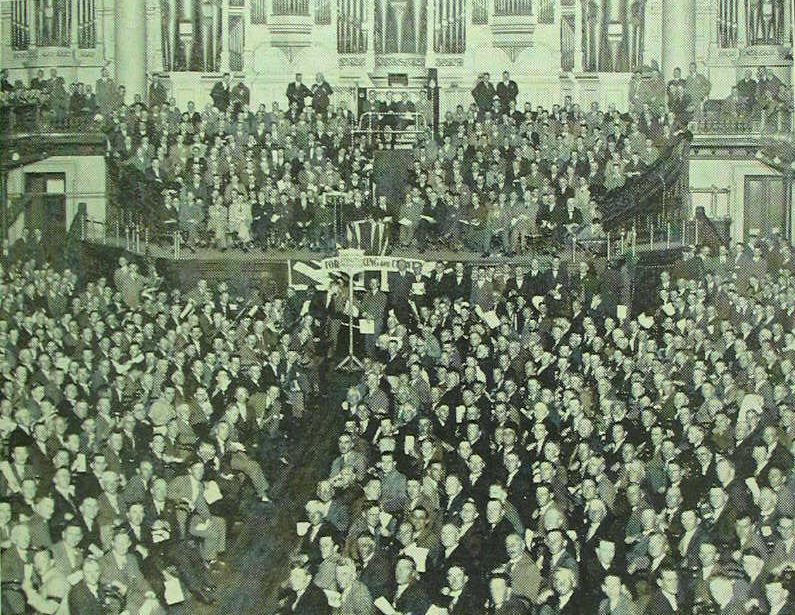
The inaugural meeting of the Australian Finland Assistance Organization in Sydney on the 3rd of December 1939 was packed to capacity.
Within days, branches of the Australian Finland Assistance Organization had been established across Australia, with offices prominently positioned in main streets. Churches, factories, schools, Returned Servicemen’s Association Halls, all were pressed into service as popular enthusiasm led to the organisation’s membership soaring into the thousands and then into the tens of thousands within days. Fund-raising activities commenced almost immediately, with Churchs’ taking up Collections for Finland, street corner collectors in the cities and large towns, collections in the factory and the office, fund-raising fetes and, on a larger scale, requests to businesses for donations. Within days, thousands of pounds had been collected, within weeks, tens of thousands as the Australian public responded to the call. By mid-December 1939, it seemed that a large percentage of the Australian population were involved in the campaign to support Finland. It was a cause that stirred enthusiasm in the public, far more so than the war with Germany. And this enthusiasm was in large part the result of the skilful distribution of information, news articles and commentary provided by the Valtioneuvoston Tiedotuskeskus team.
Buy a Ford for Finland
One of the most iconic fund-raising campaigns for Finland in Australia was the “Buy a Ford for Finland” campaign initially kicked off by a Ford dealership in Sydney in mid-December 1939. Ford Australia was the Australian subsidiary of Ford Motor Company and had been founded in Geelong, Victoria in 1925 as an outpost of the Ford Motor Company of Canada, Limited (Ford Canada was a separate company from Ford USA. Henry Ford had granted the manufacturing rights to Ford in the British Commonwealth (excluding the UK) countries to a group of Canadian investors. By the late 1930’s, the Ford Geelong plant was a large scale concern and Ford was one of the two major motor vehicle manufacturers firmly established in Australia (the other was Holden, a formerly Australian owned company which had become a subsidiary of General Motors in 1931 (in 1930, Holden had manufactured 34,000 vehicles, which gives you an idea of the scale of these two companies). During World War II both companies saw their efforts shifted to the construction of military vehicles, field guns, aircraft and engines – but in the period we are concerned with, this shift had not yet begun and orders for military vehicles had not been placed with either company.
In December 1939, prior to the decision being announced that the Australian Government would support the sending of volunteers to Finland, Ford Australia very publicly donated outright 50 Ford trucks for use as Ambulances, with the fitting out as specialist Ambulance trucks being carried out by Ford workers on a voluntary basis. Such was the enormous goodwill that this announcement generated for Ford that a Ford dealer in Sydney who was strongly sympathetic to the Finland Assistance Organisation’s efforts announced that he would donate the profits for every Ford vehicle sold over the months of December and January to the Organisation. The Valtioneuvoston Tiedotuskeskus Information Team in Sydney used the networks they had established to ensure the announcement gained widespread publicity and the Ford Dealer saw his sales soar within days. At the same time, a bright spark within the Tiedotuskeskus Information Team suggested to the Organisation that they establish their own “Buy a Ford for Finland” fund raising campaign. The concept took off like an Australian bushfire, sweeping the country. Finland Assistance Organisation speakers, news articles and radio broadcasts praised the idea. This was something tangible that Australia could contribute, something that would assist the soldiers of Finland in their fight, it was something towards which every Australian’s contribution, no matter how small, counted.
Ford Australia saw an advertising campaign that would gain them widespread name recognition in the unrelenting competition with Holden, even then somewhat of an Australian icon. Determined to milk this for all it was worth, Ford Australia almost immediately announced that all Ford vehicles purchased for dispatch to Finland would be passed on at cost, while the Australian Manufacturing Workers Union announced that their members at the Ford Plant would contribute their own time to any specialist fitting out needed for military use of the Ford trucks. The campaign swept across Australia, with Boy Scouts and Girl Guides conducting “bottle drives,” Church’s passing additional collections on Sundays, volunteers collecting money at factories and on street corners. Almost every city and town in Australia worked to purchase a Ford Truck, graphic displays tracked the funds raised and the numbers of vehicles paid for, news articles reported daily on progress – and Ford’s name was splashed across every newspaper, every day of the week. Articles were written describing how Ford Trucks were used in an Army Division, Ford Trucks were on display across the country, photos of Ford Trucks were plastered across every newspaper in the country on a regular basis. For Ford, it was name recognition beyond all expectations – and within the first week, sufficient money had been raised to pay for almost 250 of the Ford 4×4 trucks.
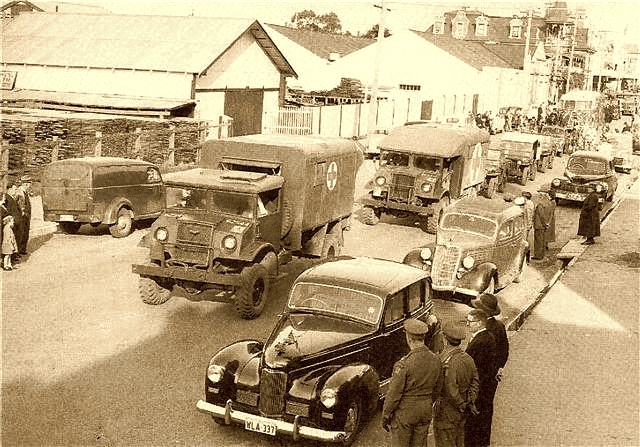
A procession of Ford 4×4 Ambulance Trucks heading to Melbourne from the Ford Geelong plant. The Ford 4×4 ambulance did little for patient comfort during evacuation, but they were among the best available within the technology of cross-country trucks at the time.
In January 1940, in tandem with the announcement that the Government would support the sending of a Volunteer Force to Finland, the Government also committed to ensuring all vehicles purchased were shipped to Finland together with the Volunteers. The campaign continued, with the target set at 3,500 Trucks – the transport establishment for a British Army Division (which in point of fact was far in excess of that allocated to a Maavoimat Division). By the end of December 1939, the fund-raising campaign had paid for 1200 Ford trucks. By the end of January 1940, with the Ford Geelong Plant now working to full capacity, some 4,200 Ford Trucks had been paid for, manufactured, crated and were in Melbourne being loaded for shipment to Finland together with the Australian Volunteers. General Motors in Australia had also, and somewhat belatedly, sprung into the act with their own campaign, but unfortunately for them, they failed to come up with a marketing slogan as catchy as Ford’s. Nevertheless, some 250 Holden-manufactured half ton 4×4 truck’s were bought and crated for shipping to Finland together with the Volunteers. On use in the Winter War, the Holden 4×4 trucks became synonymous with a rugged durability that only the Sisu-trucks manufactured in Finland rivaled. Vehicle manufacturing for Finland would end with the dispatch of the convoy of ships to Finland in early February 1940, but both Ford and Holden would continue working to meet newly placed orders from the Australian Government. The Finland campaign had actually been beneficial for both companies in that it had allowed them to re-hire (or hire and train) additional workers and move, at least in Ford’s case, to full production so that when Government orders were placed, these could be met rather more quickly than might have been the case.
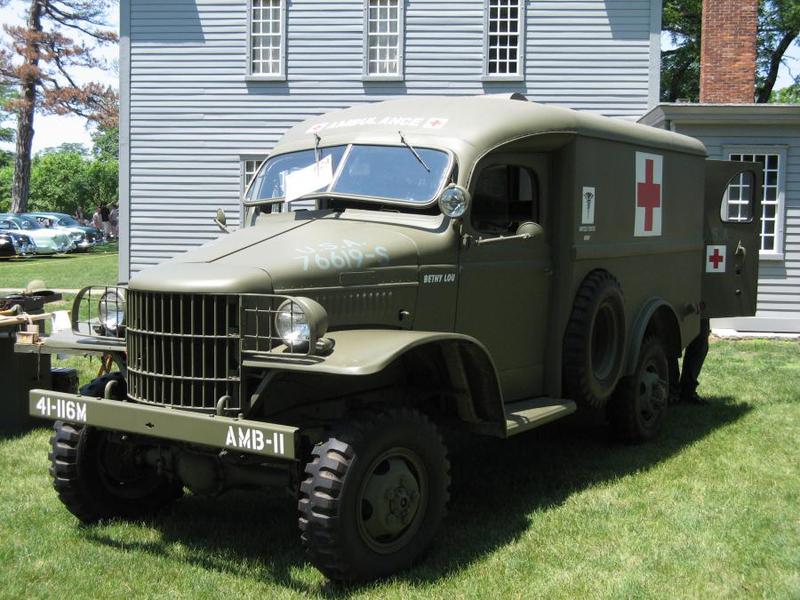
With the startling success of the “Buy a Ford for Finland” campaign, Holden belatedly got into the game with the “Support Finland with a Holden” campaign.
Photo at left: Australian-supplied Holden 4×4 Ambulance in use by the Polish 1st Corps during the Winter War (Karelian Isthmus, Summer of 1940). Note the driver is a Polish woman volunteer. A considerable number of Polish women had escaped to Finland via Lithuania and Latvia and many had joined the Polish Army in Finland. The Polish Divisions in Finland were created on the Maavoimat model and Polish women filled numerous rear-echelon positions.
There were of course other fund raising campaigns. The announcement that volunteers were being dispatched aroused the patriotic fervour of the Australian people – and the Australian Finland Assistance Organization found itself flooded with volunteers and donations of money and materials, with the Australian Government belatedly stating that all public contributions would be matched by the Government on a 1 for 1 basis (although in point of fact the Government contributed rather more as they committed to paying outright for all travel costs, the provision of uniforms and basic military equipment as well as paying an allowance to the Volunteers – which were in fact the majority of the costs). The Australian Pharmaceutical and Medical Supplies industry provided large quantities of medical and pharmaceutical supplies at cost and these were transported to Melbourne by the State Railways free of charge where they were sorted and packed by volunteers. In addition to the ships transporting the 5,000 odd Volunteers and accompanying military and medical cargo, half a dozen shiploads of Australian wheat donated outright by the Australian Wheat Board (in the late 1930’s wheat was fast becoming Australia’s single most valuable agricultural export item) with the proviso that Finland arrange for shipping.
Not only wheat was shipped. Australia was a large exporter of various agricultural products, as was New Zealand. Both countries exported frozen mutton and lamb as well as significant quantities of dairy products. In addition, both countries had a widespread canning industry with large canning plants putting out a wide variety of products – canned meats, jams, fruits, vegetables, the significance of which we often forget in these days when so much is refrigerated. Keeping in mind that with the bulk of Finland’s manpower mobilized in the military, along with many women likewise – and many more working in factories on the production of war material – and with most farm vehicles and the majority of farm horses also mobilized – Finland expected to experience a major food-production crisis in the event of a drawn out war. Another concern that arose was with the arrival of significant volunteer forces in Finland – as the Italians, Spanish, Hungarian and Scandinavian Divisions arrived – and with 25,000 Poles already in the country – and Commonwealth units en route – the Maavoimat was being augmented not just by 100,000 foreign volunteers, but by 100,000 attached mouths and digestive systems that required feeding. Given that the population of Finland was only three and a half million, and stockpiled food supplies were barely sufficient for that number, one hundred thousand additional bodies was a significant number to cater for. The provision of sufficient additional food supplies was a problem that had been fairly low on the original priority list for the Valtioneuvoston Tiedotuskeskus Teams, but this changed rapidly (Food supplies would be a problem that would escalate further in the summer of 1940 with the flood of Estonian refugees from Tallinn, and again after the end of the Winter War with the influx of Karelians and Ingrians. Fortunately, the pre-war introduction of potato and pig farming in Lapland went some way towards alleviating potential food shortages – and the ability to import food from Australia, Canada and the United States on ships of the Finnish merchant marine and through the port of Lyngenfjiord through the war years prevented any shortage of food developing. Indeed, during the Siege of Leningrad by the Germans, the Finns would permit trainloads of food to cross the border into the USSR to supply Leningrad, although there was considerable and very heated internal debate within Parliament before this was permitted).
Immediately prior to the Christmas of 1939, the Sydney Valtioneuvoston Tiedotuskeskus Team worked with the Finland Assistance Organisation to put together a “Donate Food for Finland” campaign. This too was a campaign in which every individual, even school children, could participate – and the Christmas Season saw the campaign get off to a flying start. And this was a campaign that rapidly spread to New Zealand as well. It seemed that every Grocers, Co-op and Department Store across Australia and New Zealand had a large collection box labeled “Food for the Soldiers and People of Finland” plastered across it. Schools and Churches organized their own campaigns. The Finland Assistance Organisation borrowed space from Churches, Stock Agents, Warehouses – wherever this could be obtained at no cost – to act as collection depots, where volunteers sorted donations by type, boxed and crated items and organized shipment by Rail to the Warehouses and Melbourne. Day after day, wagonload after wagonload of food poured into the Melbourne warehouses from all across Australia, where warehouses fast being packed to capacity awaited the rapidly approaching Finnish Merchant Marine cargo ships.
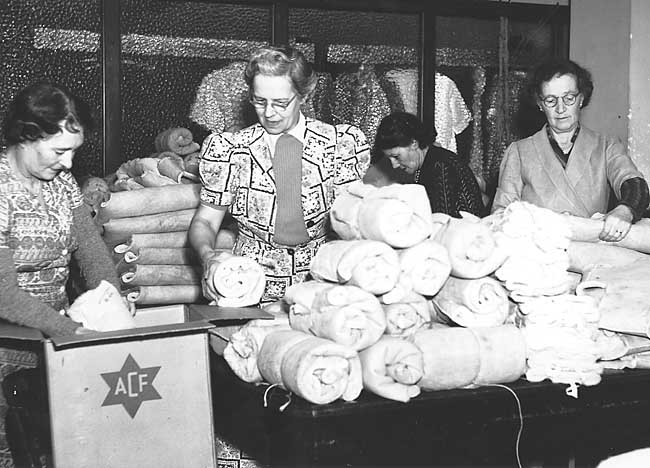
Australian Volunteers from the Country Women’s Association (CWA) at a Finland Assistance Organisation packing boxes to be sent to Finland. Numerous organizations were involved in supporting the Finland Assistance Organisation, but the Country Women’s Association was perhaps the largest and the most dedicated.
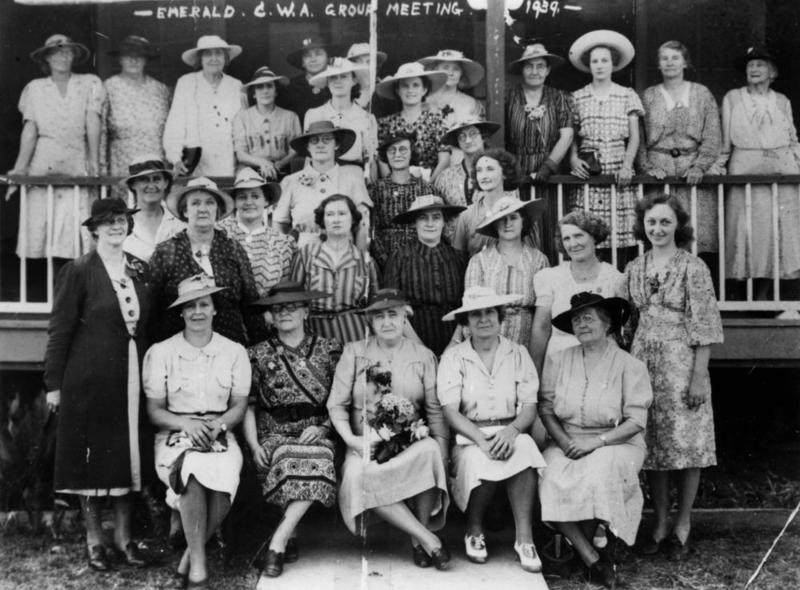
The Country Women’s Association in Emerald, Queensland, December 1939. It was small groups such as these spread everywhere across Australia and New Zealand that made the volume of assistance that was in the end provided so significant – and who also generated the political pressure on the Australian Government that ensured Menzie’s somewhat reluctant acquiescence to the dispatch of the Australian Volunteers to fight.
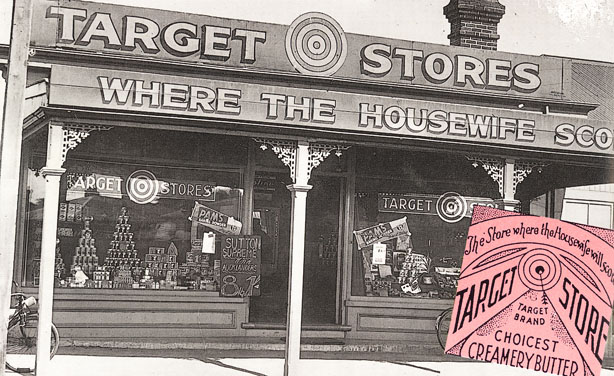
And it was in small grocery stores such as this, spread throughout both Australia and New Zealand, that canned food for Finland was collected, a trickle of donations becoming a flood – and eventually enough to fill a number of Finnish cargo ships to capacity. In this way, some interesting Australasian delicacies found their way to Finland – some to be enjoyed, some not. As the war progressed and food shipments from Australia and New Zealand were organized on a more regular basis, Maavoimat soldiers could never be quite sure what their next meal would consist of…….
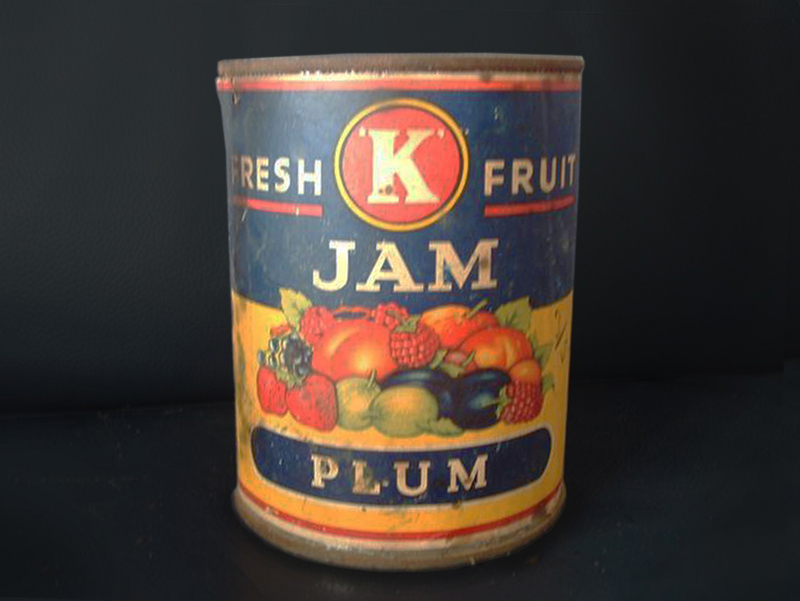
From New Zealand, “K” brand plum jam was one of the most common “jam” items sent to Finland by the pallet load (and incidentally, was one of the most popular product lines within New Zealand – sadly, the company shut up shop at the beginning of the 1970’s after ninety years in business but the plum jam was great!)
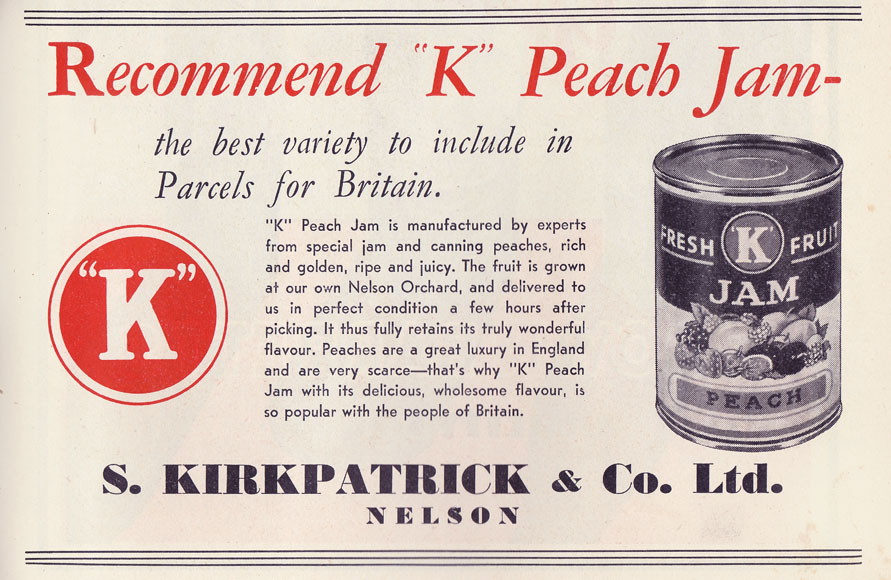
The manufacturers themselves began advertising, promoting products to be bought for shipment to Finland. “Recommend “K” Peach Jam – the best variety to include in Parcels for Finland”. And so, Maavoimat soldiers would end up with a lunch of Rye Bread with New Zealand Cheese and Peach or Plum Jam

The manufacturers themselves began advertising, promoting products to be bought for shipment to Finland. “Recommend “K” Peach Jam – the best variety to include in Parcels for Finland”. And so, Maavoimat soldiers would end up with a lunch of Rye Bread with New Zealand Cheese and Peach or Plum Jam
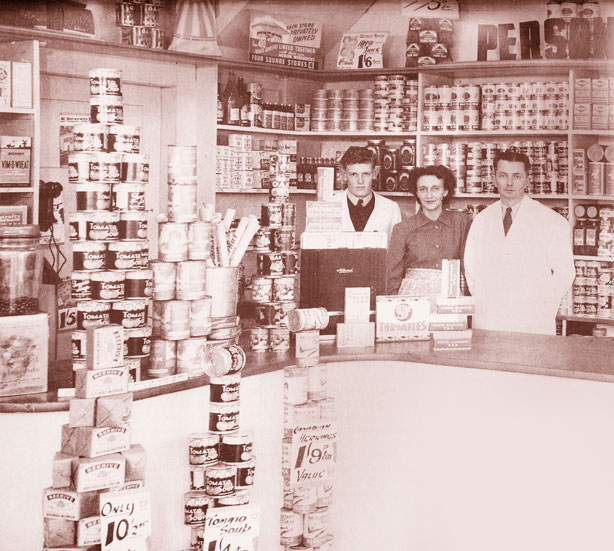
George Allen and staff in the Dominion Road Four Square store, Auckland, New Zealand with the items stacked on the counter and floor being a single day’s worth of donations to the Food for Finland Campaign made by customers.
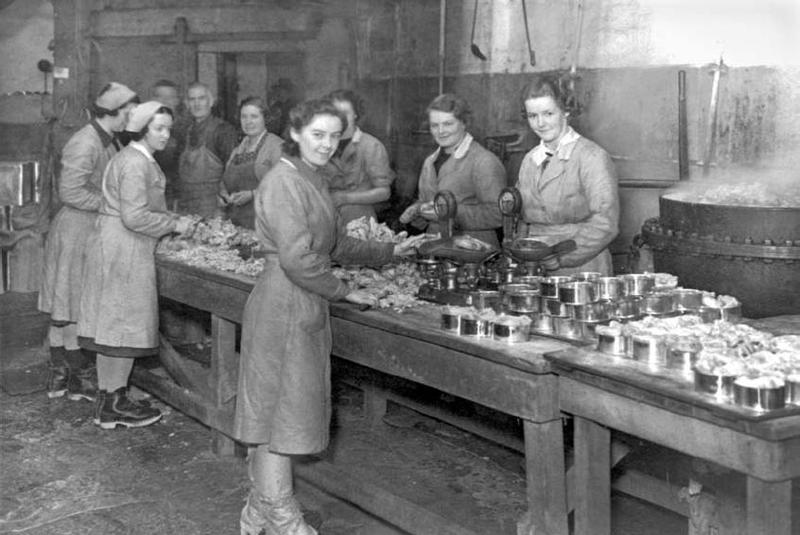
Packing sheep’s tongues into tins for shipment to Finland – at Irvine & Stevenson’s St George Co. Ltd plant in January 1940
There was of course a far wider variety of food donated than that shown above. In addition to wheat, canned meats, jams and staples such as Spag Cheese, honey, cheese, canned fruit and vegetables and fish, baked beans, vegetable soups, pork and beans, were also sent. Some of the more exotic donations were canned sheeps tongues, canned loganberries, dessert raspberries, diced fruit salad and even canned Bluff Oysters from the south of New Zealand.Perhaps the most awful of New Zealand exports, large quantities of Marmite were sent to Finland for finnish children. For those who have not had the pleasure, the taste of this so-called “food” is indescribable – although to the unwary it visually rather resembles a chocolate spread. As the manufacturer’s marketing slogan says with complete truth: “Love it or hate it.”
Marmite is a concentrate of yeast extract made as a by-product of beer brewing (and thus available in large quantities in New Zealand, both then and now). Marmite is traditionally eaten as a spread on bread, toast, or crackers and other similar baked products. Owing to its concentrated taste it is usually spread very thinly with butter or margarine. It was recommended for children due to i’s “healthy nature” and large quantities were sent to Finland for finnish children – who did NOT bless their benefactors. (For those interested in sampling this uniquely New Zealand taste sensation, please note that in November 2011, Sanitarium, the NZ manufacturer) shut down the sole production line of New Zealand Marmite at its Christchurch factory after damage from the 2011 Christchurch earthquake and its aftershocks. On 19 March 2012, the company announced that its stocks of Marmite had run out and the production line was not expected to be running again until July. Some supermarkets rab out of stock, leading to the dubbing of the crisis as “Marmageddon”. Immediately after the announcement, panic buying of Marmite took place. Over one hundred auctions for jars of Marmite were listed on NZ online auction site TradeMe, with some sellers asking for up to NZ$800 per jar; over 185 times its usual retail price of around $4.25 per 250g jar.. The NZ Government advised people to use the spread sparingly, with Prime Minister John Key admitting he may have to switch to Australian rival Vegemite once his personal supplies run out. In June 2012, it was announced that additional structural damage had been uncovered at the factory, and the proposed July return to production was pushed out to October.
In addition to the donated food which was generally in small cans, bulk amounts of Rice and Sugar from Queensland were purchased for shipment. The Finland Assistance Organisation also used a good part of the money donated to purchase large amounts of bulk-canned foods. This consisted primarily of Tinned Mutton, Corned Beef and the ubiquitous cans of kangaroo tail soup, soon to become a frontline delicacy in Finland. Both New Zealand and Australia were large-scale suppliers of Mutton and Lamb for the export market, although even in the inter-war years the bulk of this export trade was in frozen meat. However, there were numerous canning plants in existence and it proved fairly straightforward to meet the Canned Meat orders from the Australian Finland Assistance Organisation.
The great advantage of canned meat of course was that it could be shipped without refrigeration and in ordinary cargo ships (refrigerated cargo ships were fairly specialist and the Finnish merchant marine had very few of these). It could also be stored in ordinary warehousing facilities, unlike frozen carcasses which required storage in specialist facilities. Canning plants had been used extensively for these very reasons in WW1, but in the inter-war years, Australian canning plants had deteriorated. Nevertheless, there was sufficient capacity available to process canned meats and soups for shipment to Finland and the canning plants remaining welcomed the business, even at cost. Remembering WW1, the Australian Government initiated follow-on orders for the canning plants which were taken up as the initial production for Finland came to an end.
Kangaroo Tail Soup (or Stew) was something of an unknown outside Australia, but the vast numbers of pestiferous kangaroos were in fact rather tasty and made a most acceptable stew. They were also more or less free – and in rural areas, there was a sudden surge in Roo hunting as the Food for Finland campaign suggested that any good patriotic Aussie who wanted to support the people of Finland should go out and plug a few Roo’s on a Saturday and bring ‘em back into town where the local butcher could quickly process them for the local canning plant to utilize.
And since shooting kangaroos was a popular pastime, the popularity of this activity was high in country districts. One could sit down for a beer at the pub or the RSA on a Saturday evening and when asked what you’d done, you could genuinely say you’d been out working for the Finland Assistance Organisation. With a grin. There was an added benefit in that the hides from the slaughtered kangaroos made superb leather.
The ubiquitous kangaroo tail soup, soon to become a frontline delicacy in Finland. Australia would ship enormous quantities of canned kangaroo tail soup to Finland (although if one was honest, one would say the main ingredient was chunks of kangaroo steak, rather than the tails which are rather boney appendages). Since kangaroos ran wild by the millions in Australia, the cost of the main ingredient was low. That said, most of the millions of cans of kangaroo tail soup would find its way to the soldiers on the frontlines, of whom many, it must be said in all honesty, DID acquire a taste for this marsupial delight – an indication of an affinity for Australian products among Finns which can still be seen in Helsinki today with its plethora of Australia-themed bars. Stockpiles of kangaroo tail soup would still exist in military warehouses at the end of WW2 – most of these were used up by the Lotta Svard organization in their relief work in the immediate post-WW2 years in the Baltic States, Poland and northern Germany. As one Finnish soldier was quoted as saying in an Australian newspaper – “it sure tastes better than Squirrel Stew….”
The Ingredients of a typical Can of Kangaroo Tail Soup as supplied to Finland included:
1 kilo (2 pounds) of kangaroo meat, diced
4 rashers of fatty bacon cut into large pieces
2 large onions diced, 2 large carrots diced, 4 medium potatoes cubed
50grams green peas, 4 cloves garlic, finely chopped
1 tablespoon butter, pepper and salt
1 tablespoon flour, 2 tablespoon tomato sauce, 1 dessertspoon Worcestershire sauce
To make the Soup prior to canning, the diced kangaroo was lightly fried in butter for 10 min, add diced onions, garlic, bacon, pepper and salt. It was then fried for another 10 min after which pre-cooked vegetables were added and simmered for 30 minutes before stirring on flour and water, then adding tomato sauce and Worcestershire sauce. As issued by the Maavoimat to Field Kitchens in the Winter War (and afterwards) to the horror of conscripts doing their training who had been subjected to the “Kangaroo Soup” horror stories of their fathers and older brothers who had sampled this antipodean delicacy, in many cases continuously for weeks on end, one standard can served two meals. A larger can serving 10 was also supplied in large quantities, generally issued to Field Kitchens.
In this Food for Finland campaign, Australian farmers, meatworks and unions would play a large part, with many farmers donating sheep for slaughter, meatworkers donating their work (an unusual occurrence in Australia but such was the popular support for Finland), the meatworks processing and canning the meat at cost and dockworkers loading Finnish cargo ships in their own time. All told, this was a significant quantity of food and one that would be much appreciated on its arrival in Finland.
Later in the Winter War, the Finnish Government would put the importing of food from Australia, Canada, the USA and South America on a more regular basis, with less reliance on donations and fund-raising, and more on the purchase of needed basics such as wheat, rice and sugar. Nevertheless, Australia could continue to be an important source of agricultural imports for Finland throughout WW2, largely transported on the large Finnish merchant marine which would continue to roam the worlds oceans throughout WW2, earning significant foreign exchange (and losing many ships and crew) for Finland in the process.
The “Uniforms for Finland” campaign
Another area in which Australia made a significant contribution was the “Uniforms for Finland” campaign that the Australian Finland Assistance Organization initiated. One thing both Australia and New Zealand were and are noted for from the early years of settlement was the production of high quality wool. There were a significant number of sheep bred for their wool in both countries – and the sheer volume of wool produced was enormous. In the nineteenth century most of this wool however was exported raw in bales to the UK, where British textiles mills did the processing and manufacturing.
However, by 1909 some 9% of Australian wool clip was used by textile manufactories in Australia and New Zealand was similarly developing a large textile industry. The military requirements of WW1 boosted the industry, with almost all the wool produced during the war years being purchased by the Government At the cessation of hostilities, there remained a vast stockpile of unsold wool, and around 1920, in order to furnish employment for soldiers returning from overseas, the Australian Government took active measures to promote secondary industries, which contributed to the establishment of textile mills in a number of regional centres. The total number of textile and garment manufactories in Australia soon climbed to 4,575.
A typical Australian mill established at the time was Wangaratta Woollen Mills, in Victoria, which was opened in 1922 and produced worsted knitting and weaving yarns by 1923. Confidence in the future was firm and plans to expand the operation by the addition of a scouring, carding and combing plant were being drawn up; this was supplemented by a dyeing and recombing plant in 1930. The cotton and flax sectors of the textile industry had not been idle all the while, and were establishing themselves during the post-war years.
In 1923, in Sydney, George Bond (later Bonds Industries) commenced spinning cotton yarn and began the manufacture of towels and knitted garments and, in 1926, the Airedale Weaving Mills, of Melbourne, began weaving cotton tweeds and engineer’s twist. The latter company pioneered the cotton-weaving industry in Australia which grew rapidly, with a number of different companies setting up factories. Almost without exception, all these companies imported overseas technology.
With the Depression of the 1930’s, the export markets for woolen textiles saw lower demand and the prices sheep farmers earned for raw wool dropped markedly, leading to financial difficulties for many sheep farmers in both Australia and New Zealand. At the same time, stockpiles of wool built up and even as late as 1939, these stockpiles were still substantial. And with approximately 110,000,000 sheep, many of which were Merino’s producing high quality wool, these wool stockpiles were of very high quality wool – some of the best in the world. Thus as we can see, in the late 1930’s there was a large and solidly established textile industry in Australia manufacturing textiles in both wool and cotton, an experienced workforce and existing stockpiles of war materials available at reduced costs.
New Zealand was in a somewhat similar position and would also contribute a sizable quantity of uniforms for the Finnish military. New Zealand in the 1920s and 1930s also had a sizable textile industry and not only exported enormous quantities of raw wool (there were some 32,000,000 sheep in New Zealand in 1939 vis-à-vis 1,500,000 people) but also had a large number of textile and clothing factories, one of the largest of which was the Roslyn Mill outside of Dunedin, Otago. Employing 2,500 workers in its mills, clothing factories and warehouse, Roslyn Mills would complete and ship some 100,000 articles of winter clothing destined for Finland by mid-December 1939.
Roslyn Woollen Mills was only one of about a dozen New Zealand firms operating woolen mills on a similar scale who would also complete large quantities of winter uniforms for the Finnish military in record time. The Finnish orders for fabric for winter uniforms as well as for Army blankets kept the machines and clothing factories running 24 hours per day and stretched their capacity to the limit. Clothing manufactured from the various fabrics included special Shetland-blend underclothes and undershirts, heavy duty twill-weave woolen trousers, shirts, tunics, socks and heavy duty winter coats as well as woolen yarn for jerseys.
Besides Roslyn, other large New Zealand woolen mills included the Mosgiel Woollen Factory Ltd, Bruce Woollen Factory at Milton, the Oamaru Woollen Factory Co. and Lane Walker Rudkin’s Ashburton mill. In late 1939, war orders had not yet been placed and these mills had significant capacity available.
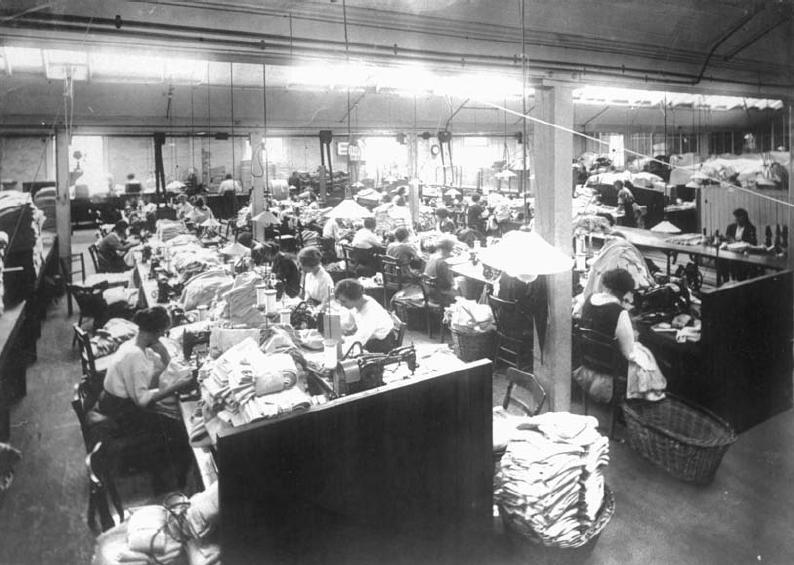
Cutting and sewing uniforms for the Finnish Army – a crowded workroom in the Roslyn Woollen Mills, Kaikorai Valley, Otago (New Zealand), December 1939.
Additionally, there was a large tannery industry in both Australia and New Zealand taking both sheep and cattle skins and either processing the hides into good quality leather or curing the hides in brine for both local use and for export. Tanning was in fact one of Australia’s oldest industries, with the earliest known tanners in the country operating in Sydney from 1803 – and in the early years of Australia, one of the few products other than wool that could be exported was hides, which could be salted and exported raw. The early tanneries were on a small scale and generally family-owned businesses with a number of workers, with some expanding in the early twentieth century as they processed hides for export or for use by footwear and clothing factories. It is also interesting to note that there was also a slowly growing trade in kangaroo hides, as it was realized that kangaroo hide made leather that was of higher strength, lighter weight and more durable than that made from steer hides with 10 times the tensile strength of cowhide and some 50% stronger than goatskin.
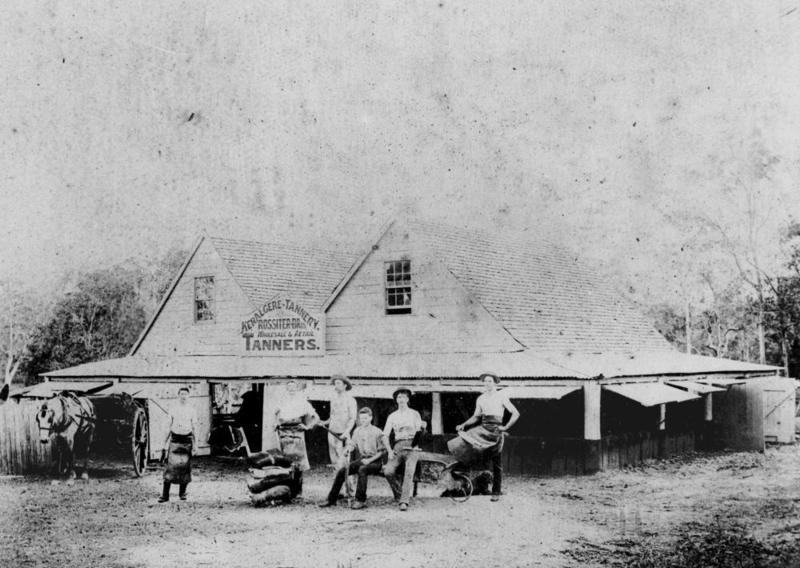
Workers pose outside the Keralgere Tannery at Morningside, Brisbane, Queensland ca. 1897 The men wear leather aprons and pose with a dog, tools and equipment. The ‘Rossiter Brothers’ sign is prominent on the workshop building, which has two-stories, a shingle roof and window awnings. The area is surrounded by bush and a horse and cart stands to one side
As with wool, significant stockpiles of raw hides and tanned leather existed, including (in Australia), significant quantities of kangaroo hide and kangaroo leather. Orders from Finland for various items of uniform and field kit (such as sheaths for Puukko knives, pistol holsters, belts and braces, straps for rucksacks, headwear, gloves and boots, as well as uniform clothing for tankers and aircrew would be manufactured in Australia and New Zealand from these stockpiles). This have a twofold effect on both countries – kickstarting the domestic textile industry into war production, so that when Government orders were finally placed the industry was geared up and ready, and also introducing some useful pieces of equipment that the Australian and New Zealand military would copy. We will look at these orders shortly.
A.H. Ellis and Co & Sleeping Bags from New Zealand
Another iconic New Zealand company which would supply Finland with specialist winter equipment was A.H. Ellis and Co., a company which had been involved in the design and manufacture of specialist outdoor equipment since the 1920’s. They made the first down-filled sleeping bags in the Southern Hemisphere and from the 1930s, the company’s sleeping bags became essential equipment for all New Zealand outdoor enthusiasts. The company had started out in 1877 when Ephraim Ellis, a hand-loom weaver from Yorkshire and Nicholson, the pioneers of the business, imported a flock machine and started making flock for mattresses in a barn. Sixty odd years ago ideas on this subject were not so advanced as they are today and with a single machine driven by a water-wheel, they made flock from wool which was then sold to upholsterers and furnishing shops. Each Firm made up its own requirements in the way of bedding, which was looked upon as a mere sideline.
The firm was dissolved and renamed E. Ellis and Co. sometime in the 1880’s and some progress must have been made within the next twenty years in the notion of what constituted a satisfactory bed, for in 1896 the Firm began importing kapok from Java and teasing it for sale along with the flock. In 1901 the manufacture of wire mattresses was started but in 1906 this was dropped and the manufacture of bedding started. About the same time electric power was introduced, and E. Ellis and Company was one of the first Firms in Dunedin to take advantage of this more economical and flexible motive power. From that time the business steadily expanded, but the processes of mattress-making did not change materially. Bedding was still a primitive case filled with primitive material and, finished laboriously by hand.
In 1925 the Firm, now under the name of Arthur Ellis (Ephraim’s son) and Company Limited, modernized its bedding plant by importing machinery from America where rapid strides and revolutionary changes had been made in the mattress industry, and introduced the new style of inner spring mattress by importing the spring units and using wool felt batts for the filling instead of flock. Owing to the high cost of production, however, this type proved somewhat expensive and the older fillings were still also used. Another associated branch of the trade was started in 1926 when the factory was extended and equipped for the manufacture of down quilts. The whole process was undertaken from the importation of the raw feathers to the completion of the finished article, and “Faireydown” soon became a household word in New Zealand. In 1929 a furnishing warehouse was started in Dunedin, and this development proved so successful that branches were opened in Christchurch and Invercargill.
One or two members of the Ellis family were keen trampers (Kiwi slang for Hikers) in the rugged mountains of the Southern Alps of New Zealand. Out of this grew an interest in the design of sleeping bags and outdoor clothing suited to extreme conditions. Hiking even then was a popular pastime in New Zealand and with demand making itself known, the company soon began to manufacture sleeping bags for sale to hunters and hikers. Word spread beyond New Zealand and the company quickly gained a worldwide reputation for the sleeping bags and outdoor clothing it designed and produced for mountain climbing and for polar conditions – with Faireydown sleeping bags being used in expeditions to the Himalayas and to the Antarctic.
The Ellis family’s involvement in manufacturing outdoor products started in the 1920’s when Roland Ellis, combined his love of mountaineering with the manufacture of his company’s bedding products to develop and make the first down-filled sleeping bags in the Southern Hemisphere. From the 1930’s the company’s sleeping bags became essential equipment for all New Zealand outdoor enthusiasts. Post-WW2, the wide recognition of their excellence was endorsed internationally when Sir Edmund Hillary and Tensing used them during their first ascent of Mount Everest in 1953.
As a result of increase of demand for the Firm’s products it was felt necessary in 1937 to undertake considerable extension in both the bedding and quilt departments and advantage was taken of the opportunity to install the latest plant both for mattress-making and for treating feathers, as well as machinery for making spring units and other components, thus enabling the production of the inner spring mattress (hitherto regarded as a luxury line) at a lower cost and its adoption as the standard. The Firm now had a staff of 135 and the program of modernization was extended in 1938 by the erection of a building housing the new office-, and an engineering workshop capable of maintaining and developing the plant in the two and a half acres of buildings which the factory occupied for many decades.
By 1939, A H Ellis & Co manufactured a small range of sleeping bags using either down or kapok as filling. These were rugged sleeping bags suitable for use in the alpine terrain of New Zealand and were designed to be durable, warm and lightweight (when compared to the weight of blankets that would be needed to provide similar warmth). At this time, it must be remembered that sleeping bags were very much a “luxury” item and were not in common use – and in fact much of the equipment that we now take for granted such as insulating pads to sleep on and load-bearing rucksacks were unheard of. In most of the Army’s of Europe a soldier’s rucksack and sleeping roll would look something like the picture below (although generally the blanket would be wrapped in a waterproofed groundsheet) – a very basic frameless rucksack with a bedroll and with additional equipment fastened on the outside. No real attention had been paid to the ergonomics of rucksack shape, loadbearing and design although you will see some rucksacks with a very basic waistband (which we will look at shortly).
While New Zealand and Australia would supply large quantities of easily manufactured woolen blankets for military use, another less significant contribution was the manufacture and delivery of some twelve hundred sleeping bags by A. H. Ellis & Co. in a rapid timeframe. At the time, as mentioned above, sleeping bags were primarily a civilian item rather than a military one – and would remain so until well after WW2 – in Finland, standard issue sleeping gear would remain a blanket and greatcoat until well after WW2. However, the Maavoimat special forces units that had evolved over the last years of the 1930’s and which were tasked with operating behind enemy lines had to a certain extent developed their own equipment – one piece of which was a cold-weather sleeping bag for use in arctic conditions.
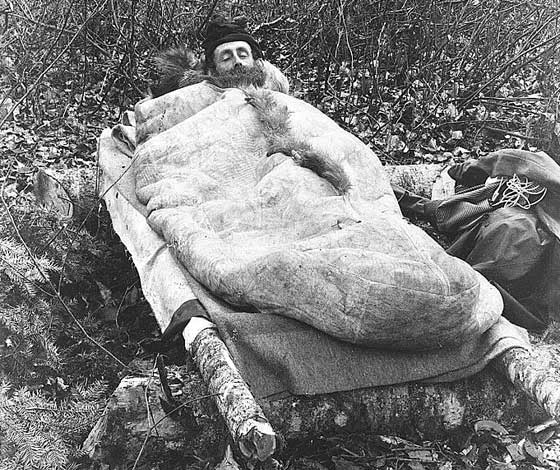
The disadvantage of reindeer skins is of course that they are heavy and bulky and are not easily man-portable – here, an early primitive sleeping covering.
In this, the Maavoimat had drawn on the early experiences of Arctic and Antarctic exploration and the equipment used in particular by the Norwegian explorer, Amundsen – and before him, Fridtjof Nansen – as well as the ability to live in arctic conditions of Finland’s own Sami people.
Peoples living in the arctic such as the Sami have long used skins such as reindeer for insulating layers to sleep on, together with blankets and coverings made from animal skins and fur. As sleeping mats, these furs provided warmth and comfort, with the stiffness of reindeer fur meaning it does not compress under body weight, providing unparalleled insulation and comfort. The disadvantage of reindeer skins is of course that they are heavy and bulky and are not easily man-portable.
Sleeping bags as we now know them began to be developed in the last half of the nineteenth century. Perhaps the best known of these early developments was a prototype of an Alpine Sleeping Bag developed and tested in 1861 by Francis Fox Tuckett, an early Alpine Mountaineer. This prototype sleeping bag consisted of a blanket material with a rubber-coated fabric on the underside.
Francis Fox Tuckett FRGS (10 February 1834 – 20 June 1913) was an English mountaineer and one of the main figures of the Golden age of alpinism, making the ascent of 269 peaks and the crossing of 687 passes. In Scrambles amongst the Alps Edward Whymper called Tuckett “that mighty mountaineer, whose name is known throughout the length and breadth of the Alps”. Tuckett entered his father’s business as a leather factor and was also a gentleman farmer all of his life, taking two to three months off each year for alpine exploration (his first trip to the Alps was in 1842 in the company of his father). In 1882, his business, under the name of ‘Tuckett and Rake’, was at 18 & 20, Victoria Street, Bristol, and was described as ‘Leather, Valonia, and Raw Hide Factors’. He was vice-president of the Alpine Club from 1866 to 1868, and a Fellow of the Royal Geographical Society. On 17 January 1896, at the age of 62, Tuckett married Alice Fox while he was in New Zealand on a climbing trip.
The next recorded development in the history of sleeping bags is the design, development and marketing of the “Euklisia Rug”, an all in one blanket, shawl and rug with a sewn in inflated pillow made in 1876 by the Welsh entrepreneur Pryce Jones, who also pioneered the mail order business. They were made from Brown Army Blankets originally made for the Russian Army. According to a copy of the Brown Patent ( http://a-day-in-the-life.powys.org.uk/eng/home/eo_euklisia.php ) in the Powys county archives, the wool sleeping bags were to be 2 yards and 11 inches long by 1 yard and 31 inches wide. These wool sleeping bags, which were the first to be mass produced and circulated, used fasteners to keep them closed. The success of this sleeping bag is supported by records which show that 60,000 Euklisia Rugs were sold to the Russian Army as well as being used in the Australian outback and missionary posts in Congo. It really didn’t look like a sleeping bag of today as it’s more of a folded rug but with a couple of fasteners it would certainly be more recognisable as a sleeping bag. Despite these records none of the aforementioned sleeping bags survive today, however the rug has been recreated using the original patent by an antique cloth specialist and donated to Newtown Textile Museum where it is now on display.
In 1889, the first commercially produced sleeping “bag” (as opposed to a blanket) was designed and developed by Fridtjof Nansen and the company Ajungilak of Norway, for Nansen’s first expedition to the North Pole. The bag was made from reindeer fur and kapok fiber (Kapok fiber comes from the Kapok tree and is light, buoyant and resistant to water. Kapok fiber was often used in place of down as it retained its insulating value even when wet, until it was superseded by synthetic fillings in the 1980’s). Ajungilak of Norway was founded in 1855 in Oslo, Norway by Jacob Michael Breien, originally specialising in blankets, pillows and clothing filling and going on to be among the first to develop synthetic sleeping bags. In 1920 they made their first down sleeping bags and in 1932 they began to focus on the sleeping bag business. Also in 1932, Martin Mehren and Arne Hoygaard crossed Greenland using Ajungilak sleeping bags. Today Ajungilak is part of the Mammut Sports Group AG – and reindeer fur and kapok fiber are not currently used.
In Canada, similar development was running in parallel. The Canadian firm of Woods Canada, established in 1885 in the Ottawa valley by James W Woods to supply Canadians with canvas products, tents, sleeping bags and clothing designed for Canada’s harshest regions, entered the market for sleeping bags in 1895, producing bags under the “Woods” label. Between 1895 and 1900, Woods Canada provided equipment and clothing for countless Canadian pioneers and prospectors, with sales soaring with the discovery of gold at Bonanza Creek touching off the Klondike Gold Rush. In 1905, Woods products sailed with Amundsen on the tiny sloop Gjöa through the Northwest Passage and between 1906 and 1915, Woods would work closely with Amundsen to prepare equipment and clothing for Amundsen’s expedition to the South Pole and his subsequent First Canadian Arctic Expedition (1913 – 1915). Woods would design the Arctic parka, combining outer shells of their patented Canatite® canvas with down insulation and traditional fur hoods – and Amundsen’s expedition would take Woods sleeping bags to the South Pole.
By contrast with Amundsen’s scientifically designed, developed and tested equipment, the British Antarctic Expedition of Robert Scott would make use of the now primitive reindeer fur sleeping bags. These had seem some improvements in design – they were tapered at the feet for example, similarly to today’s Mummy Bags, but they also froze solid in the extreme cold, meaning the user had to more or less thaw there way into them, and the reindeer fur trapped condensation inside, meaning continual ice buildup. The bags used by Amundsen would prove superior. (Incidentally, the reindeer fur sleeping bag used by Captain Lawrence Oates on Scott’s expedition is on display today at the Scott Polar Research Institute in Cambridge (UK).
Through the 1920’s and 1930’s, the old reindeer fur bags disappeared, to be replaced in mountaineering and expedition use by either down-filled or kapok filled bags – or, for less extreme use, wool-filled bags. The type of fill used largely depended on climatic conditions – down was more suitable for extreme cold at high altitude where it could be expected to be drier, while kapok was preferred if there was a risk of the bags becoming saturated with water. Down certainly weighs less than kapok and retained heat better, but it cost more and if it did get wet, it provided even less insulation than no sleeping bag at all – something that could prove fatal in cold conditions. To a certain extent this could be overcome by the use of sleeping bag covers made of a waterproofed material, generally a light canvas with a rubberized-canvas base – but again, this added more weight. Wool repels water nicely and also resists compression, but it weighs much more than any of the other alternatives and when it did get soaked, weighed even more. Cotton suffers from high water retention and significant weight, but its low cost makes it an attractive option for uses where these drawbacks are of little consequence.
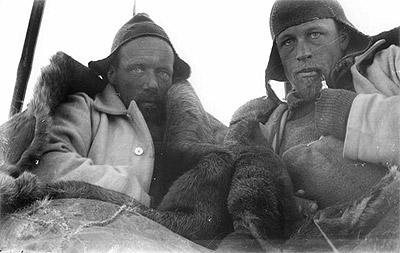
Frank Wild & Watson in reindeer fur sleeping bags and tent on sledge journey – Australasian Antarctic Expedition 1911-14
As mentioned, in the late 1930’s, special forces units within the Maavoimat began experimental use of civilian-type sleeping bags such as that illustrated below. For winter use, the Maavoimat began trials in 1938 with a small number of down-filled Ajungilak sleeping bags manufactured in Norway. There were around one hundred of these bags in Finland at the start of the Winter War and the reports from the winter warfare experiments over December 1938 to March 1939 had rated them highly. In the trials, a few improvements had also been made, included a collar round the neck to retain body heat within the bag and a “hood” to enclosed the head.
Down on the underside had also been reduced as when compressed by body weight, it provided very little insulating value – instead, a lightweight rubberized-paper waterproof insulating pad that rolled easily was being trialed. The real benefit for the special forces units whose mission was to operate behind enemy lines for prolonged periods of time was the reduction in weight and improved comfort and warmth offered by the down bags – warmth in winter being a critical factor given that it was often impossible for small units behind the enemy lines to use stoves to keep warm. The down bags therefore offered real potential to the special forces units in extending the length of time at which they maintained themselves at peak condition.
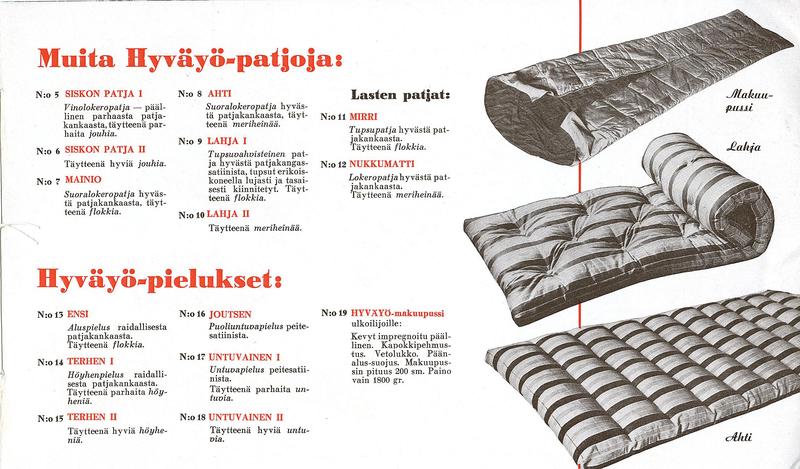
A lightweight Kapok-filled civilian sleeping bag manufactured and sold in Finland in the late 1930’s for summer use
he Maavoimat would continue to issue blankets to soldiers for general use. However, the modified Ajungilak sleeping bags that had been trialed proved to be useful enough that the Purchasing Teams were asked to purchase anything similar if this proved possible. In the event, two sources of supply were identified and orders placed. A H Ellis & Co in New Zealand would go on to manufacture twelve hundred sleeping bags and covers in the short period of time available, incorporating the new design features requested by the Maavoimat.
Some six hundred down bags would also be purchased from Ajungilak in Norway and a further five hundred from Woods in Canada, together with a smaller number donated by well-wishers and a couple of hundred kapok and down bags donated by owners in Finland and a similar number from Sweden. The end result was that around 1,800 down sleeping bags were available for issue to special forces units operating behind the Soviet lines. It was not enough – but it helped, and those lucky enough to be issued a down bag certainly benefited in the months of winter warfare that were waged.
Photo, left: A. H. Ellis & Co down filled “Nordenskiöld” bag with water-resistant cover. This is the early issue Maavoimat winter-weight sleeping bag for special forces use, manufactured in late 1939 and delivered to Finland in early 1940. Some 1,200 were manufactured in New Zealand for use by the Maavoimat. No further bags were made after the initial run as A. H. Ellis & Co used up their down stockpiles and could not source further supplies until after the war.
However, A. H. Ellis & Co would go on to manufacture sleeping bags of a similar design but with a woollen filling rather than down. These were mummy shaped and weighed less than the blanket that was standard issue. However, while an early order from Finland for 50,000 bags was completed and delivered, the Winter War ended before further orders were placed. Finland would go on to manufacture similar bags domestically for the Maavoimat over 1941 to 1943, equipping a sizable minority of the military with these bags. However, the majority of the soldiers who fought over the period 1944-1945 in the war against Germany would continue to use the old-style blanket and greatcoat combination and it would not be until many years later that sleeping bags would see common use.
That said however, the small number of down bags that were supplied from New Zealand would also arrive too late to be of any real use in the winter fighting period of the Winter War. However, they were certainly appreciated by the special forces units in the fighting against Germany, by which time they were standard issue as it had proved possible to source more such down-filled sleeping bags from Canada.
Returning to Rucksacks
Soldiers must carry what they need to fight with. This is an axiom that is true to all armies, even those that are heavily mechanized as at some stage, soldiers will need to dismount and fight with what they are carrying. This was even more so in WW2 when no armies were mechanized (although some had mechanized units) – and for the Maavoimat, whose frontline combat strength consisted almost entirely of infantry, this axiom was as true as for any. Even more so when the nature of Finland’s terrain outside of the Karelian Isthmus called for a mobile defensive war to be fought on foot in forest, lake and swamp terrain along a thousand miles or border. In this sort of warfare, the load carrying capabilities of the individual soldier are critical.
In managing load, the most important point to keep in mind is that an infantry rifleman should carry only the items necessary to complete the immediate mission at hand. The more weight the soldier has to carry, the more rapidly he becomes exhausted. And while fatigue is the infantry soldiers life in the field, fatigue can reduce an effective unit to a leaderless gaggle even in the most benevolent terrain. With rough terrain and bad weather, the effects of fatigue multiply exponentially. The more hills you have to climb and the worse the weather (and in winter in Finland, think VERY cold – and add in a snowstorm or blizzard together with deep snow), the faster you are going to tire. Physical training reduces that rate of fatigue, but does not eliminate it. On the other hand, carrying too much weight can quickly accelerate exhaustion – and carrying too much weight in an uncomfortable position or in a position that throws off natural balance and the soldiers life becomes even harder than it already is.
Day Eight of Basic Training for Maavoimat conscripts in the first training intake of 1938. Fatigue shows on the faces of the young infantrymen. Typical of central Finland weather in January, the days were cold and the nights were colder still, often marked by heavy snow. The sergeant-instructor worked hard to keep the soldiers motivated and moving under their combat loads. No one wanted to be cold or wet, so the rucks were especially heavy. With combat loads of ammunition, grenades, iron-rations, bedrolls, cold weather clothing and their individual share of rhymaa equipment each soldier carried around 80 pounds of gear. After seven days of constant day and night operational training, the effects of carrying that weight were showing. Even the fittest of the platoon were hollow-eyed with fatigue. Their reactions were slow and their minds fuzzy. They rucked up and moved on toward their next mission, an attack on a suspected strong point five kilometers away. Less than 500 meters into the movement, the tired point man missed seeing movement ahead as he cleared the edge of a small grove. The opposing force ambushed the platoon with complete surprise. No one survived.
An even more direct effect of overloading soldiers beyond the effect of fatigue on combat capability is the physical effect of fatigue and stress on the soldiers themselves. Though the common sense rule of “the higher the load, the slower the movement” applies, it is often ignored. The effects can be more long term with an increased risk of back injury. Army doctors even have a term for it – “Infantry back.” Symptoms are lower back pain, fatigued spinal muscles, back strains, or, in extreme cases, scoliosis (curvature of the spine). With the Maavoimat, units were trained to operate independently with mobility and flexibility emphasized. In the 1920’s and early 1930’s, this often meant even heavier loads than were the “standard” were carried to allow for problems with the logistical tail keeping up. No-one wanted to be without ammunition at a critical point in a mission for example. And during winter the weight of the load carried increased. This was due to carrying extra clothing and cold weather gear. In summer however, much of the weight reduction from not carrying winter equipment is offset by the need to carry more water.
The Maavoimat, as with other armies, carefully studied infantry combat (“fighting”) loads and load-bearing kit to carry this. Load-bearing equipment, designed as a combat harness and intended to carry the “fighting load”, is generally made up of a belt to which equipment may be attached or hung, and belt suspenders which perform a similar function as well as helping to support the weight of the equipment belt when loaded. The “fighting” load generally includes ammunition (both in magazines and loose in additional pouches), grenades, a small pouch with first aid materials, fighting knife in sheath, a bayonet and a water bottle. Additional small pouches could also be attached to carry a compass or watch. These are all essential items for the combat infantryman to fight with and are essential to his effectiveness in combat. Everything else – rucksacks, bedrolls, extra water – are by definition “existence load” added on top of the combat load. Those “existence” items may be necessary for long-term survival but they may also make a soldier comfortably dead if he is too tired to function as a result of carrying them.
In addition to the individual fighting load, the soldier’s load also consists of “existence” items which are required to sustain or protect the infantry rifleman, which may be necessary for the infantry rifleman’s increased personal and environmental protection, and which the infantry rifleman normally would not carry when fighting. When possible, the individual existence load items are transported by means other than man-carry. Otherwise both the “fighting” and “existence” loads are carried by the infantry rifleman. Individual existence load items are usually carried in the field pack, or rucksack.
Normal winter equipment issued to a Maavoimat infantryman, as per the Sk.Y publication (Helsinki 1933), “Manual for Soldiers Field Gear Maintenance” and confirmed Jan 1, 1934 for Enlisted Men.
Clothing generally worn: Tunic m27, Pants m27, Underwear, Sweater, Field cap m27, Overcoat m27, Snow coat (winter whites), Gloves, Leather gloves, Leather belt, Belt buckle, Suspenders or Y-Straps, Boots, Socks or cloths used as socks in the Finnish Army, Helmet, Skis & ski poles, Dog tags, Cockade, Bandolier, Snow goggles or mask;
Weapons and combat load: Rifle, Rifle sling with buckle, Rifle muzzle cover, Bayonet, Bayonet frog, Bayonet metal hooks, Ammo pouch (s), 1 ration rifle ammo (number of pieces of ammo not mentioned but standardized in 1938 as 8×20 round magazines for the new Lahti-Saloranta 7.62 SLRs being issued), Personal medical kit, Compass (group or officer gear), Binoculars (group or officer gear), Grenade(s), Water bottle (canteen), Puukko Knife and sheath;
Existence Load: Reppu (Rucksack), Breadbag, Leather straps for pack, Groundsheet, Blanket, SY cleaning kit for Rifle, Rifle cleaner fluid, Oil bottle marked SY, Gas mask, Shovel and belt holder (for use in attaching to rucksack), Messkit, Mess kit leather straps, Cutlery, Cup, Shaving kit or personal kit, 1×8 foot length of rope, iron rations, Share of rhymaa equipment (share of shelter, portable stove, machinegun ammunition, additional loose rifle ammunition, mine(s), additional grenades).
Note that no additional clothing was carried, only what was worn. In extreme cold however, more than one blanket might be carried and additional sweaters and a scarf might be worn. Over the period from 1935 on, equipment improvements and the introduction of new weapons led to a steady increase in the amount of weight an individual infantryman was expected to carry. From 1938 on, pistols began to be issued for individual riflemen as a backup weapon (this was a matter of individual choice) and infantry ryhmaa began to be issued with new anti-personnel mines which had to be carried. The issuing of the new Lohikäärme Vuota body armour starting in late 1939 added an additional 8-10 lbs of weight to the individual soldiers load.
The introduction of new weapons with high rates of fire such as the rhymaa (section) light machinegun, the Sampo, and the Suomi submachinegun all required the infantry rhymaa to carry a considerable amount of additional ammunition to feed these weapons. And while the Sampo was a tremendously effective light machinegun, it could use a lot of ammunition in a short timeframe. There was also the Rumpali (the new shoulder-fired mini-mortar – more commonly now referred to as a grenade launcher) whose rounds were not light, particularly when each infantryman carried an additional dozen or more rounds – and when you were going into battle, you certainly wanted as much ammunition available as possible. There were also the new man-portable Nokia radios which the Company (and as more became available, the Platoon) needed to carry.
Over the same period, serious efforts were made to improve the Maavoimat’s logistical supply capabilities. One of the biggest determining factors in infantryman loading is a soldiers confidence in the logistical system. The Pohjan Pohjat volunteer unit that had fought in the Spanish Civil War had identified this as a consistent issue – that soldiers at the platoon level had lacked confidence in the logistical system. This had lead to the soldiers overloading themselves with items they considered essential when going into combat – generally ammunition, water and food. Analysis of the experiences of Pohjan Pohjat made a point of emphasizing that this had to be addressed – when soldiers request ammunition, water and food, those requests must be command priorities. Effective staff planning should forecast when those demands would arise and emergency resupply, in a reactive mode, should be the exception in all phases of operations. In the defense for example, soldiers should not have to wait to be supplied with barbed wire, anti-personnel and anti-tank mines and additional stockpiles of ammunition. They should get these critical items as soon as they begin to move into a defensive posture.
To this end, numerous improvements in the Maavoimat logistics organization took place over the period between 1935 and the start of the Winter War – to provide the support needed, logistical operators needed both the physical assets (including security) and the training opportunities necessary to ensure they could perform their mission during operations. This topic will be covered in subsequent posts as we look at the organization and equipment of the Maavoimat in later posts. For now, suffice it to say that the emphasis was twofold – one emphasis was on ensuring that soldiers knew that they could rely on regular resupply (and ensuring this happened) while the second was on managing the individual load carried by each rifleman.
Tailoring the Load
The Infantry Manual advised that “the load an infantryman carries should not include any other item that can be carried in any other way. Determining the soldier’s load is a critical leadership task. The soldier’s load is always mission-dependent and must be closely monitored. Soldiers cannot afford to carry unnecessary equipment into the battle. Every contingency cannot be covered. The primary consideration is not how much a soldier can carry, but how much he can carry without impaired combat effectiveness.” The 1939 manual goes on to state that the soldier’s combat load should not exceed 75 pounds. That limit combines the fighting load – weapon, magazines with ammo, grenades and water canteen weighing in total about 35 pounds together with 10 pounds of body armour – and the rucksack and selected items at 30 pounds. Remaining equipment and materials needed for sustained combat operations form the “sustainment load” to be brought forward by company and battalion when needed.
Officers and NCO’s were advised to ensure the men carried only what was required to carry out the assigned task, allowing only the minimum necessary of “comfort” items. With the type of task, terrain, and environmental conditions influencing the clothing and individual equipment requirements, the unit commander was instructed to set out to the infantrymen the essential items that were to be carried. Leaders were trained to conduct load inspections to ensure load instructions were adhered to.
There were four standard load configurations specified in the manual as a guide:
Fighting load – Only what is worn = 46.9 pounds
Fighting light – Worn plus a small assault “breadbag” = 59 pounds
Approach march – Worn plus the rucksack = 74.9 pounds
Everything – Worn plus the rucksack, assault breadbag, additional ammunition and rhymaa equipment = 95 pounds
During summer exercises in 1938, the initial soldier’s load was sampled. Some units entered the exercise area at fighting light (59 pounds), some at the approach march (74.9 pounds). Of the 13 units samples, only one unit entered the fight at fighting load (46.9 pounds). Typically, units in the summer exercise entered the fight at fighting light (59 pounds) or the approach load (74.9 pounds), and in the winter exercises at the end of 1938 entered the fight either at approach load (74.9 pounds) or everything (95 pounds). Putting this into task, enemy, troops, terrain, and time available (TETT-T) perspective, during the summer exercises units came into the fight between 13 and 35 pounds heavier than they should have been. The winter exercise units came into the fight between 15 and 35 pounds too heavy. The net effect was that units in both summer and winter overloaded themselves to the extent that for some, their fighting ability was impaired.
As a result, Officers and NCO’s were advised to consider the risk versus gain aspects of combat loading soldiers. They were advised that as long as soldiers had their mission-essential equipment, they might be uncomfortable at times, but they would be able to sustain their combat effectiveness. Conversely, if soldiers were overloaded and they collapsed from the weight of non-essential items, they might not even reach the objective. By overloading their men with comfort-related items, leaders in effect expended them before they had the opportunity to fight. In considering all of this of course, load-carrying kit and rucksacks were essential.
In late 1939, as the Maavoimat mobilized, it was not only uniforms that they were short of. The Maavoimat certainly had rucksacks, but in 1937 they had begun to reassess rucksack design as a result of the increased load that was being carried and had finally settled on an improved rucksack design – but this had only just started being produced. As a result, there was a substantial shortage or combat rucksacks. Rear-area troops had their rucksacks returned for reissue to combat troops and instead, were issued with whatever was available.
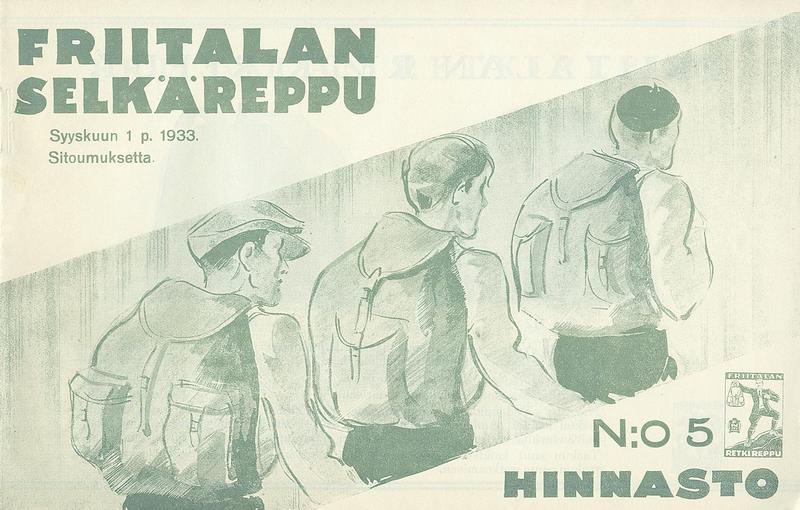
Whatever civilian rucksacks were available were requisitioned and issued to rear-area troops. Swedes would also donate many civilian rucksacks.
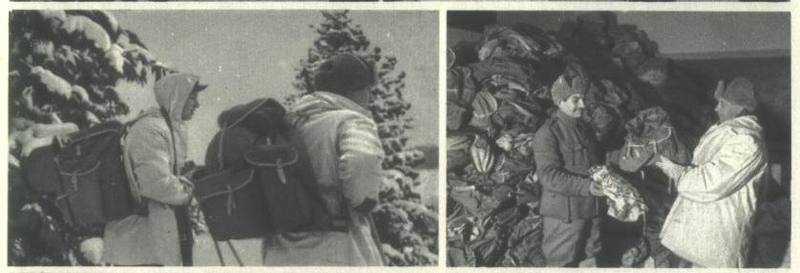
The Norwegians would donate 37,000 military rucksacks to Finland. These were suitable for use by combat soldiers and made up a good part of the shortfall for the frontline units.
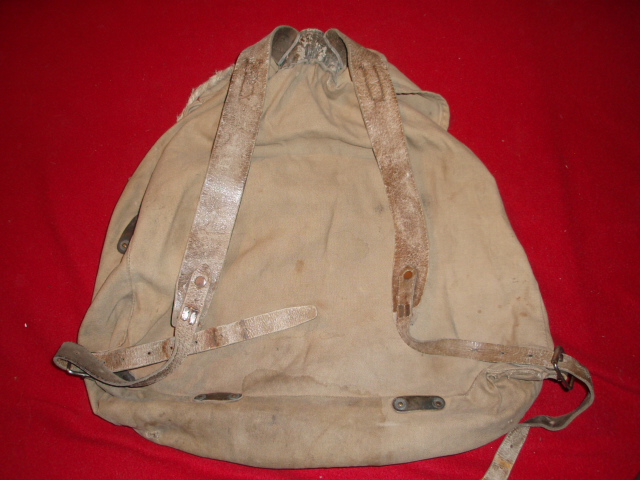
As you can see, two carrying straps, no reinforcing where the tops of the straps are attached to the canvas. With a heavy load, this type of rucksack was uncomfortable and also, with no waistband,, insecure when moving strenuously.
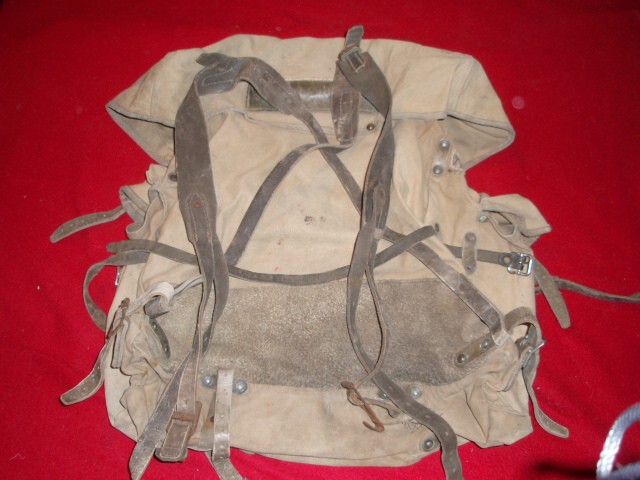
Same backpack, view of carrying straps, again no waistband. Note there is no frame for support – this type of frameless rucksack is essentially a carrying sack with all the weight supported by the shoulders. Colloquially known as a “kidney crusher” as that’s where it bounced when you walked or ran while carrying it. Most unsuitable for the carrying of heavy loads, and worse still when anything hard with straight edges was inside it and close to your back. Nevertheless, they were available and remained in use throughout the Winter War although by 1944 they had been largely retired.
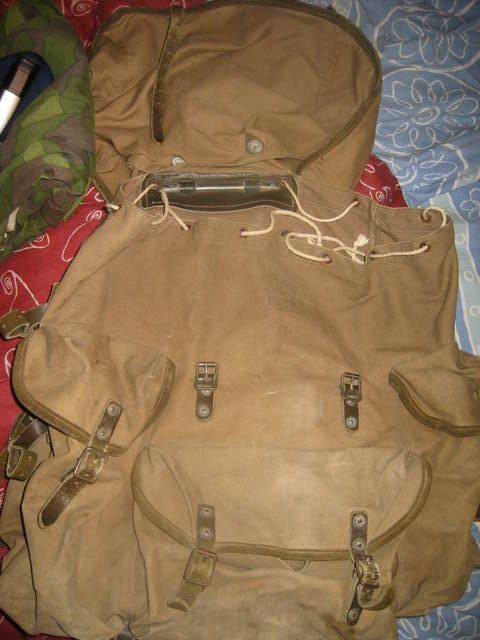
The so called “satulareppu” (saddle rucksack) was the “new” design intended to replace existing rucksacks. With a larger capacity, ergonomically improved design and more comfortable to wear, it was an excellent design for the time. Manufactured domestically, large quantities of canvas and leather donated to Finland by the Australia-Finland Assistance Organisation would make the ongoing manufacture in large quantities of this model rucksack possible.
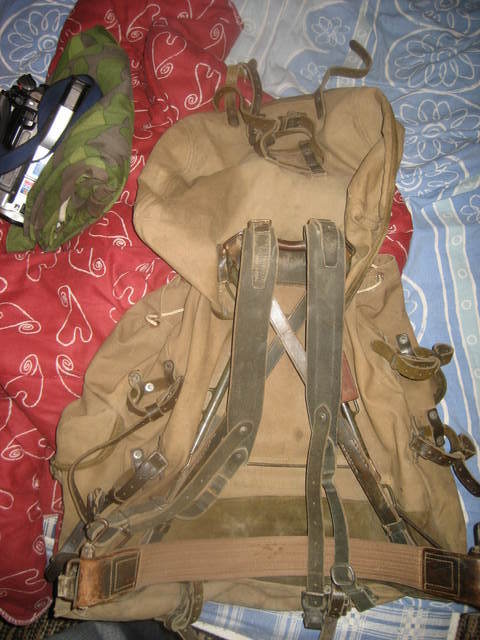
Note the improved load-bearing and support design – waistband, criss-cross straps on the back helping to support the load, metal frame which assisted in keeping the load off the back, leather straps on the sides and top for fastening external items to the rucksack easily. This was a vast improvement over the earlier models. In late 1939, manufacturing of this rucksack had been underway for only just over a year and numbers in stock were limited. Large numbers (well over two hundred thousand) would be manufactured and issued over the course of the Winter War and by 1943, this rucksack would be the standard issue to all Maavoimat soldiers – largely made possible by the large shipments of canvas and leather dispatched from Australia.
Over the course of the Winter War, the Maavoimat would also acquire large numbers of Red Army rucksacks from their previous owners. As with much other captured and recovered Red Army equipment, these would be reissued within the Maavoimat and many would see service through to the end of WW2.
Finnish Uniforms from Australia and New Zealand
Valtioneuvoston Tiedotuskeskus were well aware of Australia’s (and to a lesser extent New Zealand’s) reputation as an exporter of wool and hide. Prior to WW2 Finnish cargo ships had been regular visitors in Australian ports, loading shipments of grain, wool and hides for export. As has been noted in an earlier post, some of the last sailing ships in the world transporting commercial cargos were the Finnish-owned sailing ships on the grain route, the “Cape Horners”, loading grain in Australia and then sailing across the Southern Ocean, rounding Cape Horn and thence to Europe. (For a fascinating insight into life on these ships, read Eric Newby’s “The Last Grain Race” and his “Learning the Ropes: An Apprentice on the Last of the Windjammers” which has an amazing collection of photos showing what life was like on these sailing ships). With a Finnish consulate in Sydney, Finland was well-briefed on the Australian economy and Australian industries and the Valtioneuvoston Tiedotuskeskus team (and the Purchasing Team that accompanied them) were well-prepared.
Finland had generally imported what wool that was not produced locally from Argentina and from the British Commonwealth countries of Australia and New Zealand – and with a fairly large domestic textile industry, business ties with Australian exporters existed. War planning had identified both Australia and New Zealand (and Argentina) as a potential source of supply for wool, canvas leather for the manufacture of military uniforms and military equipment and this was in fact one of the key areas that the Valtioneuvoston Tiedotuskeskus team in Sydney was intended to focus on when negotiating for assistance. And there WAS a major need. As has been mentioned a number of times, Finland had spent a considerable amount of the state budget on defence, together with loans and fund raising through Defence Bonds. However, the main focus of spending had been on weapons, munitions and equipment – NOT on uniforms and uniform “accessories” such as belts, webbing, suspenders, sheaths for knives, winter hats, gloves, etc. “You can’t shoot someone with a uniform” was the general thought through the last years of the 1930’s and the emphasis had always as a result been on weapons and munitions – and despite the all-party support for increased defence spending, there was in Finland a continuing strong under-current of resistance to any expenditure thought of as “unnecessary”. And so, while there were just enough uniforms for the conscripts undergoing training, and for the Suojeluskuntas and Lotta Svard members who had paid for them themselves, there were to few uniforms available in military storage depots and warehouses for the soldiers mobilized from the general reserves.
As the Finnish military had quietly mobilized over the summer and autumn of 1939, this had become more than obvious, with mobilized reservists referring rather sarcastically to their “Model Cajander” uniforms. This was a pointed reference to the Finnish Politician and Prime Minister Aimo Cajander, who even at this late stage and despite the intelligence reports and aerial reconnaissance photographs taken from Ilmavoimat Wihuri photo-recon aircraft flying at high altitude over the USSR, did not believe that the Soviet Union would actually attack Finland – he had consistently been strongly opposed to increased defence spending and had at one stage stated that “I would rather see the money that we waste on defence spending go to build schools for our children rather than pay for uniforms for soldiers to molder in warehouses.”
This statement had been made at the height of the debates over increased defence spending following the Munich Crisis and it had been with bad grace that Cajander had allowed himself to be overruled, with the defence budget drastically increased while other “social” spending, which he regarded as far more useful, was cut. Cajander had however scored a minor victory – he had his way in ensuring that no defence funds were “wasted” on uniforms – “we’re paying for the defence of Finland, not for the military to display themselves like peacocks” as he put it – with the end result being that Cajander’s name is now best remembered for the “Model Cajander” uniform which most Finnish reservists wore at the start of the Winter War: Soldiers were given a utility belt, an emblem to be attached to their hat — to comply with the Hague Conventions — and otherwise, they had to use their own clothes. Fortunately, the Finnish Army had more than enough weapons, ammunition and increasingly, the new “Lohikäärme Vuota” body-armour – but of uniforms, nowhere near enough.
Aimo Kaarlo Cajander: Prime Minister of Finland on the outbreak of the Winter War (born 4 April 1879 in Uusikapupunki – died, 21 January 1943 in Helsinki) was, outside of botany, best known as Prime Minister of Finland at the start of the Winter War. He was a Professor of Forestry 1911–34; Director-General for Finland’s Forest and Park Service 1934–1943; Prime Minister in 1922, 1924, and 1937–1939; Chairman of the National Progressive Party 1933–1943 and a Member of Parliament. Cajander came to politics in 1922 when President Ståhlberg asked him to take office as Prime Minister, although he had not up until this time participated actively in politics. Ståhlberg asked him to take office as Prime Minister a second time in January 1924. Cajander’s short-lived cabinets were merely caretakers before parliamentary elections. In 1927 Cajander joined the National Progressive Party and in 1928 he was chosen as Minister of Defence. He was elected to Parliament in 1929. When Kyösti Kallio was elected President in 1937, Cajander was asked as the chairman of the National Progressive Party to form a majority government. Cajander formed a coalition government of the two largest parties in parliament – the Social Democrats and the Agrarian League – the so-called “Red-Earth government”.
He personally opposed increased defence spending to the end, refusing to the very last day of peace to believe that there was any threat of war from the Soviet Union (although fortunately, his views on defence spending were over-ruled both from within his own party and from almost all other parties in Parliament, something he acquiesced to less than gracefully). The outbreak of war and the attack on Finland by the Soviet Union left him stunned, perhaps resulting in his allegedly stating after he was advised that war had broken our “Tarkoittaako tämä, että hallitus kokoontuu ennen virka-aikaa?” (“Does this mean that the Government will meet before the official time?”). His government was given a unanimous vote of confidence in Parliament, but then resigned immediately, after which Cajander’s high-flying political career collapsed. He remained in parliament as an MP and continued to work as Chairman of the Finnish Forest Service until his death in Parliament House in January 1943.
Nevertheless, despite Finland’s otherwise high state of preparedness for a war, the supply of Uniforms suitable for wear in winter combat-conditions remained an enormous gap – and with the entire nation in arms, excepting only old women, essential industry workers and children 14 and under, large numbers of uniforms were needed. Adequate winter uniforms were also needed for the rapidly increasing numbers of foreign volunteers, including the large numbers of Polish soldiers already in Finland who had arrived with only what they were wearing at the time of their evacuation. Finland did in fact have a textile industry where uniforms had been made in small quantities, but there was no possibility of producing the hundreds of thousands of pieces of uniform clothing required in a short timeframe. This was where the Valtioneuvoston Tiedotuskeskus team (and the small Military Purchasing Team attached) in Sydney came in (as did similar teams elsewhere in the world). The Military Purchasing Team (which was actually made up of a mere half a dozen purchasers, too old to fight but with decades of experience in the textile business in Tampere) had travelled to Australia with the specifications for a range of both Winter and Summer uniforms, as well as samples and specifications of the fabrics.
With regard to Uniforms, there had been very little delay. As war looked probable rather than possible, the Military Purchasing Team had been allocated a budget by the Defence “Tsar”, Rudolph Walden, to kick start uniform manufacturing, with additional funding budgeted for immediate release should war break out. As a result, emergency orders were placed with selected Australian and New Zealand clothing manufacturers in mid-November 1939. Large orders for textiles (woollen fabrics, cotton and canvas) and leather for shipment to Finland were also placed and with large stockpiles existing in Australian warehouses, one Finnish cargo ship which had just arrived in Melbourne was already well en-route loaded with a cargo of Australian grain, raw wool, textiles and leather when the Winter War broke out. On the outbreak of the Winter War, the existing Finnish orders that had been placed were increased substantially, and in anticipation of a prolonged war, orders were placed for large numbers of lightweight summer uniforms.
As we look at the orders placed, we will also look at the Finnish uniforms themselves as well as taking a brief look at the history behind them, and their development over the inter-war decades.
A somewhat cursory background to the development of Finnish Uniforms
(Please note that some of the content below is summarised from an article by Vic Thomas, “The military uniforms and accessories of the Finnish Army and Civil Guard” – for the full article and illustrations please go to http://www.mosinnagant.net/finland/Finn … evised.asp. Photos are taken from a number of different sources. Any screw-ups with the actual uniforms are definitely mine ![]() )
)
The Model 1919 Uniform
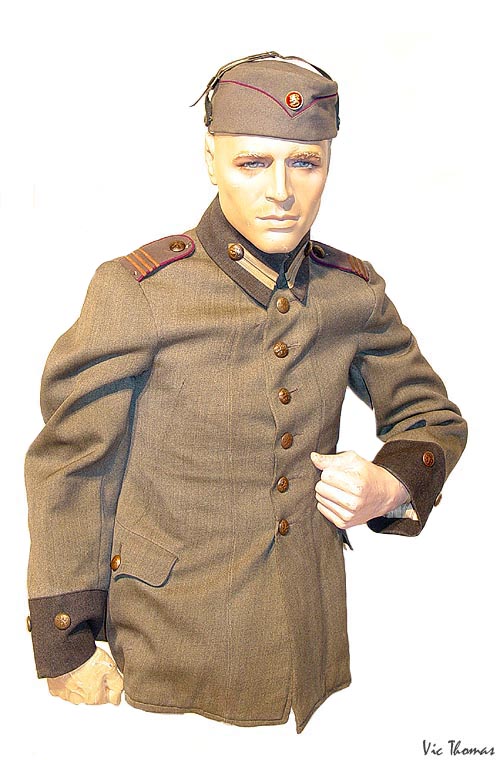
The Finnish Model 1919 tunic. The cap is of a later model but of the same service branch. Note the color of the piping on the epaulettes and on the edge of the cap
In the years just after the Finnish Civil War (1918-1919), the nascent Maavoimat (Finnish Army) had not only to acquire weapons and train soldiers but was also faced with the need to equip itself with field gear and uniforms. The early Maavoimat used tunics and field uniforms of all sorts and nationalities including altered and even “as issued” Imperial Russian, German, and Swedish tunics, not to mention the widespread use of civilian clothing. This made for a rag-tag look that was viewed as unsuitable for issue in the newly organized armed forces and also made it difficult to distinguish enemy or friendly troops, so field command could be problematic.
The Finns decided to work on a standard issue tunic and a design was selected that was similar to the German/Prussian tunics that were worn by the Finnish volunteers of the 27th Jaeger Battalion and by German troops that came to the aid of the “White Finns” during the civil war. These first tunics were designated the model 1918 and model 1919 tunic. The Finnish m/19 tunic was the initial tunic produced for issue but were made in very low numbers. The material of the m/19 was of fine quality and the tailoring of exceptional craftsmanship, having more of a dress appearance to them and being much more suited for the parade ground and the officers clubs of the professional officer than for wear in battle. They were not suitable for any kind of prolonged field or combat use, and with the high neckline of the collar and the tailored fit of the waist and shoulder area they were not particularly comfortable. There are also no exterior cargo pockets of any capacity that a proper combat tunic would need.
Somewhat incidentally, Field Marshal Mannerheim gave the job of designing the rank insignia and badges to his aide-de-campe, Akseli Gallen-Kallela, who incorporated a great sense of style and national imagery into his designs in an effort to create a national feeling among the armed forces personnel.
The model 1922 uniform
In order to improve the comfort and function of the m/19 uniform and also to make mass-production easier, it was decided to modify the design to make the uniform more practical for general use and also to reduce the costs of making the uniforms (one must remember that the budget for the armed forces of Finland at this time was very small). The new design was approved and became the model 1922 (m/22). With the founding officers of the Maavoimat being largely made up of ex-Jaegers, the Germanic influence was strong and the design influence of the German tunics was seen in the m/22.
The m/22 tunics were designed to be a general issue tunic and were produced in two color variations. The standard color was a steel gray but there was also a blue version issued to those in the naval forces. The Ilmavoimat (Air Force) and Coastal Artillery wore a combination of the two uniform colors – generally the gray blouse with the darker blue trousers. A lightweight version of the m/22 was produced for officers wear in the summer – this was made with a lighter cotton material and was worn primarily for ceremonial functions and for office work
The classification and rank insignia on the M/22 tunics was ornate and formal, with great differences between branch of service designs as well as in rank insignia. These tunics made comfortable formal or garrison wear but proved completely unsuited for field use, being deemed a disappointment as a combat issue tunic. While the m/22 addressed some of the flaws of the earlier 1919 style with the addition of two large cargo pockets on the bottom of the blouse, the fabric was too delicate for prolonged field issue and did not hold up to rigorous use. What was needed was a uniform for combat troops that would be easy to produce, cheap in material and labor costs and of a sufficiently rugged design and construction to be an adequate combat tunic under severe conditions.
The model 1927 Tunic
In 1926 a committee under Eversti (Colonel) Kaarlo Lauri Malmberg was established to address and correct the problems associated with the m/22. Before we go any further, a quick review of Malmberg is in order as he will appear more frequently as this history proceeds.
Kaarlo Lauri Torvald Malmberg (8 May, 1888 Helsinki, Finland – 14 March 1948) graduated from school in 1908 and continued his studies at the University of Technology Mechanical Engineering Department from 1908-1914, at the end of which he achieved a Master of Science degree. After graduating, he worked at the Gottfried Strömberg machine shop. He was one of the first to volunteer to go to Germany for military training in 1914 and enlisted on 6 March 1915.
He was assigned to the Royal Prussian 27th Jaeger Battalion in the Engineers, but volunteered for the artillery. Major Bayer, the battalion CO, chose 26 men for the battalion artillery on the basis of interviews – Malmberg was one of these 26. He was transferred on 17 March 1916, which was the official establishment date for the battalion artillery. Over WW1 he took part in fighting on the Eastern Front with the 27th where he was awarded the Iron Cross 2nd Class for bravery and initiative in battle.
In February 1918 Malmberg joined the Finnish White Army, arriving in Vaasa on 25 February 1918 with the main body of the Jaegers. From Vaasa he was ordered to Pietarsaari and assigned responsibility for forming and training artillery units. The Jaeger Artillery under Malmberg participated in the capture of Tampere, after which Malmberg was appointed to the command the Jaeger Artillery Brigade. In the last big operation of the Civil War, the capture of Viipuri, he was the commander of the artillery throughout. This was the first battle where the Finnish Artillery fired to a coordinated plan.
After the war ended, Malmberg was ordered to design artillery training in 1918, together with Colonel Vilho Nenonen. In May 1918 he was ordered to Headquarters and on 12 July 1918, he was appointed Director of the Finnish Artillery School, and on 24 July 1918 Commander of 1 Field Artillery Regiment.
The next step in Malmberg’s military career was in September 1921 when he was appointed Commander of the Suojeluskuntas (Civil Guard), a position he held until he retired in 1945. This was a position of some responsibility, increasingly so following the Defence Review of 1932 and the ongoing reorganization of the defence forces through the 1930’s. On first being appointed, Malmberg saw that the Suojeluskuntas were disorganized but he also saw the positive aspects of the Suojeluskuntas and Lotta organisations. Taking his new role seriously, after visiting units across the country, he ensured that what was unessential was dropped, with the main focus being battle and field exercises. “Combat Exercises opened my eyes to see what power lay in this voluntary organization”, Malmberg said. “These men and women I met had plenty of pent-up power and the military training offered unsuspected possibilities.” As Commander of the Suojeluskuntas, Malmberg was responsible for the rapidly increasing effectiveness of the Suojeluskuntas in the 1930’s, as well as the setting up and success of the Military Cadet program over the same decade.
He served as Minister of Defence from April 1924 to October 1925 and as Acting Commander-in-Chief of the Army in 1925. Between 1928 and 1928 he was Chairman of the Uniform Committee. He served as President of the Association over 1920-1922 and as Jaeger League chairman over 1921-1922, as well as being a member of the Defence Review Committee in the years 1923-1924. He was promoted to Major-General in 1927 and was promoted to Lieutenant-General in 1936. Over the inter-war years, he kept abreast of military affairs in other countries, naking a number of Maavoimat-commissioned study trips abroad to Sweden, the UK, Germany, Italy, France and Switzerland. He was also a member of the Defence Council from 1923 to 1939 and as such, was closely involved with the ongoing strengthening of the defence forces through the 1930s, a program of which he was, as might be expected, a strong supporter. In this position, he was largely responsible for the turning of the Suojeluskuntas and Lotta organizations into semi-apolitical organizations in which SDP members were welcomed, if not with open arms, then at least without overt hostility. He was also responsible for many of the training programs that were introduced through the 1930’s and was an enthusiastic advocate of the increasingly popular KKT martial art, both within and without the Suojeluskuntas and Lottas.
As Commander of the Suojeluskuntas, Malmberg was also largely responsible for encouraging the tremendous effort that went on from 1934 through to 1939 in developing the defensive positions on the Karelian Isthmus through the participation of volunteers. The first series of volunteer camps in the summer of 1935 saw 65,000 men participate, of which an estimated two-thirds were Suojeluskuntas, with around 2,500 Lottas attending to the catering and accommodation. Year by year the numbers grew, with the encouragement of patriotic organisations, the government and employers, until at its peak over the summer of 1938 and 1939 some 130,000 men and teenagers took part in the construction activities. As commander of the Suojeluskuntas, Malmberg also visited Switzerland a number of times through the 1930’s – both countries faced a similar military challenge and both maintained defensive postures that were strikingly similar. There were a number of mutual visits between the Swiss and Finnish militaries, with valuable information exchanged. Shooting teams from both countries also participated regularly in competitions in each other’s national and local competitions.
Malmberg would take away a number of Swiss practices which would be introduced into (or would influence) the Suojeluskuntas and into military reserve practices within Finland. Perhaps chief among these was the progressive issuing of individual military equipment to every Suojeluskuntas member, and then to the Reserves. Initially this was limited by the number of weapons and field kit items available, but as items became available they were progressively issued to Suojeluskuntas members, then to members of the Active Reserves, then to Lottas and Cadets. Malmberg’s stated objective was that, as with Switzerland, every Finn old enough to carry a weapon should be issued a weaponto keep at home and be trained in its use as well as being a member of a Reserve or Home Defence unit, thus markedly speeding up the mobilization of the military. Malmberg was also instrumental, at first somewhat reluctantly and then with growing enthusiasm, in the training and assigning of Lotta’s to roles in the mobilized military. In this he met with considerable resistance but the inexorable demands on manpower as the military was reorganized and strengthened lent a great deal of weight to his arguments in favour of assigning Lottas to non-combat roles such as logistics, signals, intelligence, medical, AA and searchlight units and to rear-area units.
During the Winter War and indeed through to the end of WW2, Malmberg was the Home Defence Force Commander – a position of some responsibility. The Home Defence Force (which included many of the Lottas, the Cadets and men too old or medically unfit for front-line service or in war-critical industrial positions) augmented the mobilized defence forces, taking responsibility for manning depots and warehouses, performing logistics tasks away from the front-line and immediate rear-areas, conducting recruiting and training for additional troops and front-line Lottas and manning security positions around important factories, transport facilities and the like. In addition, the Home Defence Force took care of horses and vehicles, located clothing, administered rationing, located equipment and tools, manned AA Guns and searchlights, co-ordinated the movement to safety of refugees and performed numerous other tasks, many of then not planned for but which needed to be done.
As the war went on, the Home Defence Forces also provided replacement troops to replace those killed and wounded, with the 16-17 year old Cadets first undergoing military training and then being sent first to the 3 Replacement Divisions, and from there to the frontlines. In January 1940, the front needed 10,000 trained men to replace those who had been killed or were wounded. In February 1940, the number needed for the month was 14,000 and month by month through the war, more replacements were needed. These were all found from the Home Defence Forces. Home Defence units would also come to take responsibility for scouring battlefields for reusable Red Army equipment, collecting and transporting these to depots where it could be evaluated, cleaned, assigned for repair or scrap, collected and reissued, freeing up combat capable units from this needed work. Much valuable equipment was recovered and reused in this way, much of it was reissued to arriving foreign volunteer units who lacked much in the way of equipment, many, such as the British Commonwealth troops, not even having Rifles. Home Defence units would also be responsible for the collection, transportation and guarding of the increasingly numerous numbers of Red Army prisoners (very few in the first months of the war, but far more numerous over the summer of 1940).
After the Winter War, the Home Defence Forces would be organized more formally based on the lessons learned. When Finland re-entered WW2 in 1944, the Home Defence Forces were again mobilized and performed similar roles. As the Maavoimat advanced southwards down the Baltic littoral, special units of the Home Defence Forces would move in behind them, tasked with assisting in the temporary administration of the liberated areas, providing care for refugees and relief to civilians, supporting the establishment of Government and the re-establishment and re-equipment of the Estonian, Latvian and Lithuanian militaries through the redirection of lend-lease equipment from the US and Britain (in general the Finns had concealed the amounts of equipment they had built and stockpiled and asked for far more than they actually needed – this was then reissued to the Estonian, Latvian and Lithuanian militaries that were rapidly re-established as soon as the frontline had passed by. The local American and British commanders knew what was happening but turned a blind eye. The US State Department remained oblivious until the Soviet Union protested, by which time it was a fait accompli). Malmberg in large part also responsible for the logistical side of this effort and for the establishment of the training units which guided the reformation of the militaries of the Baltic States.
As such, Malmberg’s was a critical role through the last year of WW2 and towards the end, the pressure told. Always something of a heavy drinker (as were a number of his fellow Generals incluing Aksel Airo, Taavetti Laatikainen and Martti Wallenius), the situation came to a head in the summer of 1945 when Mannerheim rather pointedly addressed the matter of his drinking with Malmberg. The result was that Malmberg was required to apply for threemonths sick leave, which Mannerheim granted with strict conditions set. However, Germany surrendered before Malmbergs sick leave was up and Malmberg resigned at his own request. He died in Helsinki on 14 March 1948 of severe cardiac illness. He is buried in Hietaniemi Cemetery, Helsinki. The Home Defence Units that he had led so capably for so many years would miss his leadership as they, together with the rest of the Finnish military and their allies from Poland, Lithuania, Latvia and Estonia faced the challenge of maintaining their freedom from the Soviet Union. Such was the calibre of the Officer who was in charge of the Uniform Committee in its early days.
He married Ragni Ståhlberg (1890-1965), a dentist, in 1918 (she was the sister of Jaeger Major Armas Ståhlberg). Ragni Ståhlberg was a Dentist in Helsinki. Her father was a cousin of Kaarlo Juha Ståhlberg, the first President of Finland (from 1919-1925). She was heavily involved in the setting up of the Finnish School Dental Nurse program in the last half of the 1930’s and worked closely with the New Zealand consultant to the Finnish Government on the program on technical aspects of setting up the training program for School Dental Nurses. Colonel Hunter and his wife Greta were frequent guests at Malmberg’s home.
The committee soon decided that the m/22 was not suitable and that a new combat uniform was needed. This decision led to the development and issue of the Model 1927 (m/27) tunic. This would be made of coarse heavy wool and was to to be issued to all branches of service for combat use, including both the Finnish Army and the Finnish Civil Guard (who often procured their own equipment outside of Army controls and decrees).
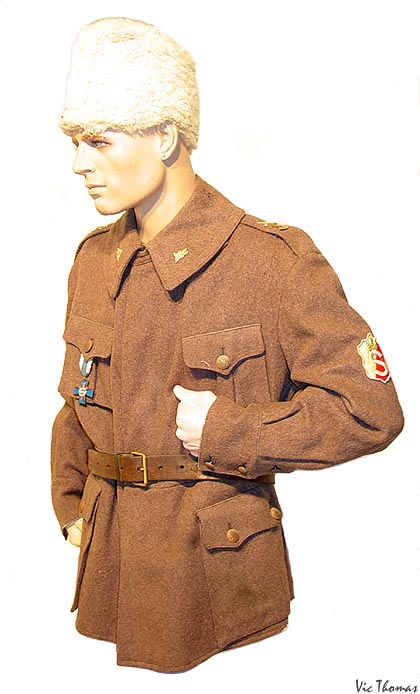
The M/27 tunic as issued to all branches of the Finnish Armed Forces. This is an early tunic issued to a Civil Guard trooper showing the brown tint commonly seen on first versions of the m/1927 style uniforms
There was also to be a standard uniform color (a brownish-green) regardless of service branch. Sometime in the early to mid 1930’s the green color or tint became the more dominant color shade of the wool dye for the m/27. It is not known why this change in color dominance occurred, whether from new material or as a result of an official order. Some of the major improvements over the m/19 were the addition of oversized front breast pockets, an oversized collar that offered some protection from the elements in colder conditions, and an inner pocket for personal items or a field dressing. The tunic was also made with an inner belt for ease in fit for all body types. The m/27 was a vastly superior uniform to the m/22 for field duty and combat issue. They were strongly constructed and could hold up under almost any usage no matter how vigorous or challenging. The new issue uniforms generally met with approval by troops in the field.
These tunics were meant to be issued as both summer and winter wear. One of the first problems to arise was that the fabric used was thick and heavy-duty and as such could be uncomfortable to wear in warmer months. Another related problem was the cost of the heavy wool used in the construction of the tunic, the added expense of which began to be looked upon as an unnecessary strain on the tight military budget. Senior officers also felt that the m/27, with its large bulky appearance, was not appropriate for the more “formal” duties a uniform was required to perform on garrison duties and outside of “field” exercises and combat. There was a distinct “garrison” mindset in many among the Finnish military of the 1920s that, post-1932 and as one of the starting points of the strengthening of the Finnish armed forces, would be ruthlessly stamped out.
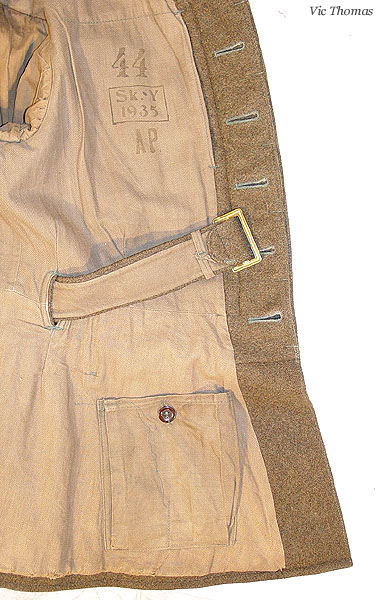
Inside of a Civil Guard m/27 tunic. Here the inner pocket and the waist belt can be seen. Tightening the inner belt gave the uniform a much more custom fit. It also allowed for a general one-size-fits-all type feature as the uniform had some self adjusting capability.
And indeed, in 1932 yet another joint committee was established to discuss not only uniforms but the redesign of many of the outdated field issue items in use by the Finnish armed forces. A general modernization of uniforms, field issue and weapons was to take place throughout the entire Finnish armed forces over the remainder of the decade. It was this commission that recommended that the m/27 uniform be modernized. These commissions set into motion the research and development of the tunic that was to replace the m/27 – the Model 1934 (m/34) uniform. This new uniform was to change the look and design of the Finnish issue uniform for the next 30 years.
We will cover the uniform in this Post as it was these uniform items that would be manufactured for Finland in quantity by Australia and New Zealand (and later by Argentina). Field issue and weapons will be covered in later posts where we examine the Maavoimat in detail).
The beginning of change-1932 to 1934
The 1932 committee started by acquiring current issue combat uniforms from Germany, Britain and Sweden through the Finnish military attaches stationed abroad. These were to be used in a comparative evaluation in respect to the function, color and design of the new Finnish combat uniform. While all were examined in detail, it was the German-style uniform that was decided on as the model on which to base a new Finnish design. The style of the British tunic was seen to be inadequate in respect to the weather conditions that Finnish troops are faced with – and the brown wool color scheme was rather to reminiscent of the Soviet Army’s colors. The Swedish uniform was considered a suitable design but buying the cotton material that was used posed a problem for the budget-constrained Finnish military. It was also obvious that the basis of the Swedish uniform was in any case rooted in the German designs.
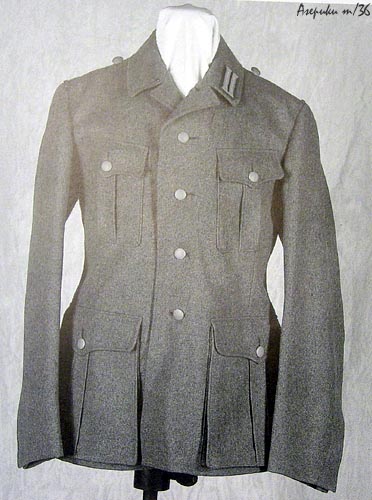
The Finnish prototype model of the 1934 tunic was modeled off the German model 1932 combat tunic. Photo is attributed to “Asepuku m/36” by Petteri Leino.
In regard to a summer uniform, the 1932 committee on equipment upgrades approved a new lightweight cotton blouse for wear in the warmer summer months. The m/32 summer tunic was primarily reserved for officers but proved to be so popular that the committee decided in May of 1933 to approve its issue to general enlisted troops as well. An order was placed with Armeijan Pukimo (the Army Clothing Store and often abbreviated inside the tunic with a black ink stamping of AP) but very few of the summer blouses were delivered to field units before another switch was ordered in 1936.
In February of 1934 the trial production in limited quantities of a new uniform was approved for field-testing. This would be known as the experimental uniform Model 1934 (m/34). These tunics were produced in very limited numbers, being issued to possibly only nine units in the Finnish Army for testing. These first trial tunics were made in two colors- those being gray and a green-brown shade of the earlier m/27. It is believed Germany supplied the wool material used to manufacture these tunics, but this has never been confirmed as fact. Small numbers of these m/34 uniforms did see issue in the Winter War of 1939 but these were very rare to encounter and the issuing of these to combat troops can be attributed to the shortage of uniforms at the start of the Winter War. These uniforms made use of a much lighter and less coarse wool than seen in the earlier m/27 tunics and as such were quite a bit more comfortable to wear in warmer months when compared to the earlier m/27. The German influence on these tunics could be seen in the design of the open collars that now were smaller and less confining. The collar could also be worn unclasped so that it fell open. A special scarf was worn around the neck. The front breast pockets were now pleated, and the shoulder epaulets were similar to those seen in the German Army and constructed of the same material of the tunic.
The m/34 also saw the first wide spread transfer of the rank and service branch identifying patches and badges from the shoulder boards to the collar. This was a practical move based on two decisions. One was that shoulder boards were reminiscent of the earlier Czarist designs and the second is that ranks displayed on shoulder boards made the ability to identify the rank and service impractical under combat conditions or if covered by a jacket or coat. With these being moved to the collar as a patch sewn on, it allowed a quick and easy identification of who was who. Both the m/32 summer tunic and the m/34 were a great success and a foundation was laid for the development and manufacture of the next version, which was based strongly on the m/34.
Decision made – the model 1936 Uniform
The final decisions of the 1932 committee and the reports from the field on the testing of the new model 1934 uniform were reviewed and some small changes incorporated to ease manufacture over the 1934 trial version. The two most important changes were to the color and the style of the collar. It was decided to deviate from the open lapel style of the German tunic to that of the more traditional m/22 collar style but in a lower height.
The final design of the new tunic would serve not only as a combat tunic but also as a suitable uniform for non-combat functions. On May 29th of 1936 the order was given for the production to begin of the new m/36 tunic. As soon as sufficient supplies were in store, it was to be issued to replace all existing styles of uniform in service. The decision was made that it would not be fiscally responsible to remove the older style uniforms like the m/22 and m/27 from service completely. Instead a transfer of the existing stockpiles of the older uniforms would take place. The Suojeluskuntas and the Border Guard units were to use the older pattern uniforms until wear and tear eventually ensured their removal from service.
The first tunics were made from existing stores of cloth for the m/22 uniform and as a result were of a lighter gray color than that finally adopted. These early tunics also often converted from existing stores of m/22 tunics and updated to the m/36 specifications. This resulted in not only the lighter color cloth but also the use of buttoned sleeve cuffs in a darker color. As soon as the existing stockpiles of the cloth and uniforms of the earlier styles were depleted by the manufactures, a more uniform darker gray color emerged as adopted. In keeping with the approved design features of the m/34 tunic, the new m/36 retained the four pockets with scalloped closure flaps on the front of the uniform. Two smaller pockets were placed on each breast with pleated centers.
The new m/36 incorporated the same style belt hooks as used on the German tunics and the trial m/34 uniform. These stainless steel belt hooks were attached to the rear of the tunic by two heavy cotton cloth straps in the interior of the jacket. They then slid out of one of four slits or reinforced buttonhole type openings on the rear of the tunic. They were a great aid in load bearing and helped to hold the tunic belt up when loaded with full cartridge pouches or the bread bag and canteen.
In line with an increasing emphasis on combat readiness rather than garrison duties, there was no differentiation between uniforms for officers and those for NCO’s and enlisted men, although some officers had their uniforms privately tailored. These tunics were generally of a higher quality in material and manufacture as well as style. While the pattern is the same for each tunic it was common for the cloth color to deviate from tunic to tunic depending on the source and what was in stock from the suppliers at the time of manufacture.
Greatcoats
In addition to the uniform reforms of 1934 it should be noted that the winter wear of the Maavoimat included Army issue great coats. Other varieties were issued like the m/22 sheepskin and sheepskin lined oilcloth coats but those were only issued to certain units like the Cavalry and Artillery units and were not the norm. The primary greatcoat of the Finnish Army came into use with the m/22 uniform and was calf length and made of heavy coarse wool. The interior was lined in a cotton cloth. Privately tailored greatcoats often used higher-grade wool and had full length lining material.
The m/22 greatcoat was made of medium gray cloth and used a dark gray wool for the collar and sleeve cuffs. This was later dropped and the 18cm cuffs were made of the same material as the coat. These m/22 great coats were made in large numbers and many served on up into the wartime period with the m/36 uniforms. The m/27 uniform had a great coat as well in the matching green/brown wool color of that particular uniform.
The m/36 greatcoat followed the same pattern as the m/22 but was simplified in construction. Early greatcoats had a button closure on the rear kick pleat that allowed it to close all the way down when on guard duty or when standing. It could be unbuttoned for marching or ease of running when extra space was needed for movement. The m/36 greatcoats were well made from heavy wool with silk and cotton linings. There were other greatcoats made in the m/36 such as a the cotton raincoat and oil cloth version as often issued to naval units but these fell largely into voluntary issue and are not encountered in any quantity or frequency today.
As mentioned, an alternative to the m/22 and m/36 greatcoat was the “fur” or sheepskin coat that was more commonly used by the Border Guards, who had more latitude with their clothing and equipment than did the Maavoimat soldiers. Border Guard units had a large variety of different types of fur coats bought over the years. The most common one seems to have been a civilian-type sheepskin with a cotton or viscose windproof fabric shell, one with a wool fabric shell was much rarer. The second most common type was an unlined lightweight calfskin “fur” without a shell.
Both types of coats were in short supply for issue to the mobilized reservists immediately prior to the Winter War – but both coats were also easily made by clothing manufacturers in Australia and New Zealand from available materials. Clothing companies in both countries were able to complete manufacturing large quantities of these coats in a short timeframe – and with the Purchasing Team in Sydney advising somewhat informally that the soldiers themselves preferred the sheepskin coats, these were in large part what were manufactured and delivered. These were generally manufactured with a heavy cotton windproof shell and a “sheepskin” lining. The cutting for these coats was generally fast, with the assembly by sewing taking most of the time.
In both New Zealand and Australia, clothing factory sewers were augmented by large numbers of women volunteers under the auspices of the Finland Assistance organizations who carried out the assembly and sewing by hand, vastly increasing the quantities of winter coats and of windproof trousers that could be produced in the timeframe available. (This sort of support for Finland, incidentally, was not unique to Australia and New Zealand but also occurred in Britain, Canada and the US – see this link for a short newsclipping on this subject from a local newspaper in the UK. the Wharfedale Observer).
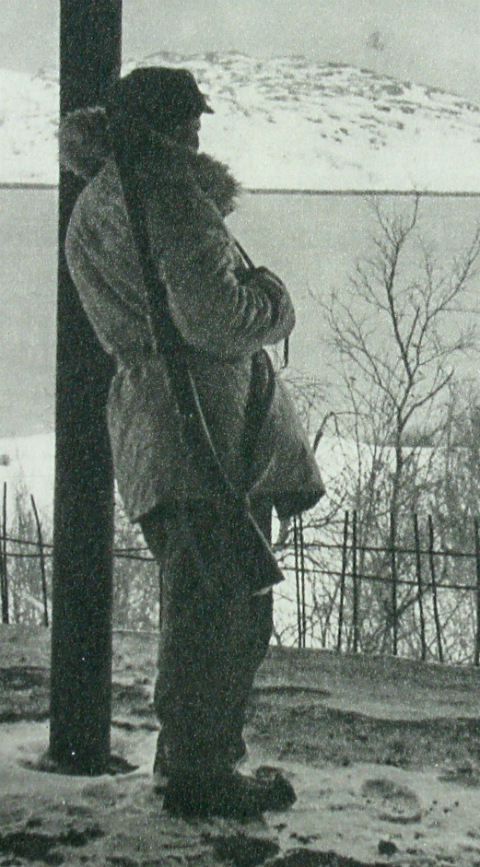
“Fur” coat, photo from the Winter War. The fur coats were much preferred to the m/22 or m/36 wool greatcoats by the men due to the weight saving ( 4 kgs for the greatcoat compared to 1.7 kg for the fur coats).
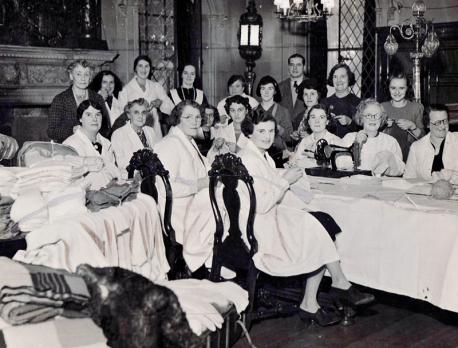
It was a beautiful setting for this sewing party when they got together to make clothes for people in Finland in January 1940. The group met at Denton Hall, near Ilkley, to make garments as part of the war effort. In the Ilkley Gazette of January 19, the sewers were said to be members of the Denton Depot. Mrs Arthur Hill and Miss K Hill were pictured with the group, left, as they worked on a special consignment of goods for Finland. The garments shown were part of a large consignment, much of which had already been collected and dispatched.
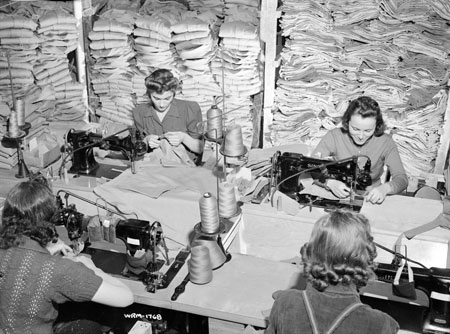
In New Zealand, the Roslyn Mills clothing factory would produce 25,000 pieces of military uniform per week for the Finnish Defence Forces in the period from mid-November 1939 to the end of January 1940 when the last of the Finnish cargo ships and troop transports departed. Here, Roslyn Mills sewers at work. The piles in the background give an idea of the pace at which these skilled workers could put together uniform items. Note that Roslyn Mills was one of only half a dozen large manufacturers in New Zealand who for some ten weeks dedicated their production facilities to the Finnish orders – and their were many such factories in Australia also.
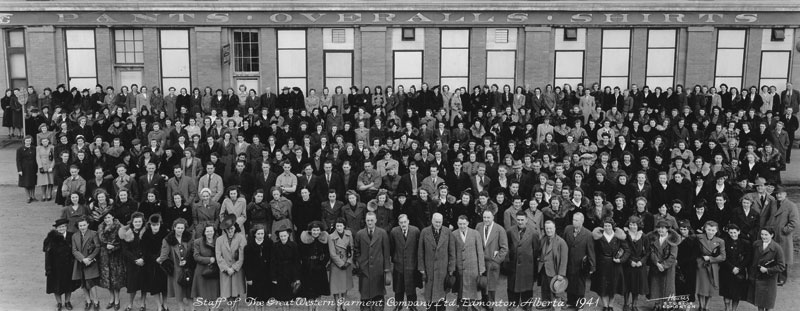
A staff photo taken outside the Roslyn Mills clothing factory in January 1940 to commemorate the factory’s contribution to the Finnish War. Roslyn Mills, as with other large New Zealand textile manufacturers and clothing factories, had built their business and reputation on high quality workwear and fair employment practices. If anything, the workers strove to deliver even higher quality clothing for the soldiers of Finland – the end result was that the uniforms and coats from New Zealand were of extremely high standard and much sought after.
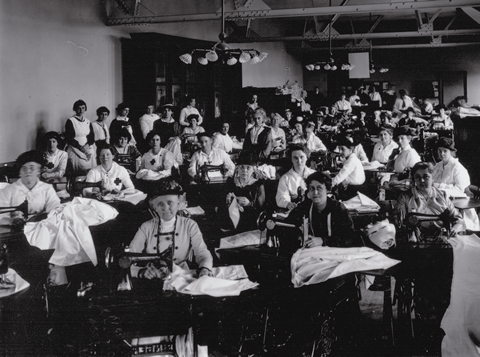
Here, Australian women of the Country Women’s Association gather in a local Church Hall to sew everything from shirts, pyjamas and kit bags to uniforms – as the Australia-Finland Assistance Organisation advised “some goods are better made by hand than bought.”
The end result of this mammoth effort was that by the end of January 1940, a period of ten weeks, some twenty large clothing factories across Australia and New Zealand, producing on average around 20,000 uniform pieces each per week, had manufactured approximately four million items of uniform clothing. A further hundred odd smaller, together with thousands of women volunteers contributing their own time, had pieced together and additional six and a half million pieces of military uniform clothing items in the same timeframe – and anticipating shipment times, these were a mix of winter and summer weight items. In total around ten million items of uniform clothing would be completed by the end of January and these would fit out a sizable percentage of the Maavoimat. In addition, enough raw materials (textile, leather, canvas, etc.) would be shipped to Finland to allow Finnish clothing manufacturers to run at full capacity for the duration of the Winter War. The first shipments left at the end of November – the initial two weeks production had been dedicated to winter uniform items, and this shipment included 200,000 winter coats, 200,000 winter pants, 200,000 winter-weight tunics and 200,000 winter hats. This shipment would take six weeks to get to Finland, arriving in mid-January 1940 and being issued to the troops some two weeks later – where they were warmly welcomed. A similarly sized shipment of winter uniforms would arrive some two weeks later and would included additional items such as sweaters, scarves, gloves and winter underwear.
A postscript on the Coats and Tunics
One other reason that the rank insignias were moved from shoulder patches to the collar was that in the field the epaulettes resulted in the rucksack rings chafing. Removing the epaulettes / rank insignia removed this problem, or at least reduced it. It should also be mentioned that despite the design improvements, the m/36 greatcoat and uniform was still not entirely comfortable in field use. Post Winter-War, the new m/43 uniform would be introduced which would be based on a detailed assessment of the performance of the m/36 in the Winter War. Assessment, re-design and field trials in 1942 based on almost a year of combat use through 1940 by the entire Maavoimat would result in a new uniform that was a vast improvement over the old.
Trousers
No self-respecting uniform is complete without trousers (unless of course you’re Scottish). Finland, as has been mentioned, was heavily influenced by German uniform design and opted for breeches for the m/36 uniform. These were worn by pretty much every soldier in all ranks. The pants featured a high waist, button fly and adjustment tabs on the sides. No belt loops were fitted, as the breeches were meant to be worn with suspenders. The leg cuffs tapered towards the end, and were secured with a strap that went under the foot and buttoned up to the side. At the time, breeches were still widely worn by civilians (and would remain so well into the 1950’s, and probably even later in northern Finland).
M/36 Caps
The caps worn by the Finnish soldier remained unchanged. The first m/22 style remained in service throughout the war as summer and dress versions for the troops. Minor alterations were made in construction and color but the style remained virtually unchanged. The m/22 was intended to be replaced by the all-purpose m/36 cap but in practice both were used. An m/34 cap was also trialed and for winter wear this had a separate quilted liner (of quilted cotton or silk) that could be snapped into the inside of the cap for added insulation. The sweatband was leather. The m/34 experimental and the simplified wool m/36 cap (which did not have the snap in liner) were essentially the same style but the m/36 cap used a gray soft cotton cloth lining.
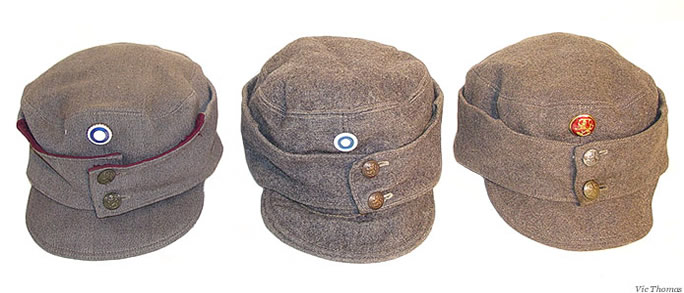
Notice the different wool colors. The middle hat, 2nd row, is the summer m36 hat with National emblem.
Both of these all season caps were hot in the summer months and so the m/22 style continued to be worn in the summer months. This prompted a change and in 1939 an updated version of the m/22 was made to correspond with the new m/36 uniform. This was made of lightweight cotton. 1939 also saw the adoption of a fur winter cap made of heavy gray wool with a sheepskin inner, it had flaps that tied at the top to hold them up. The front brow flap was attached in the up position with a small metal snap.
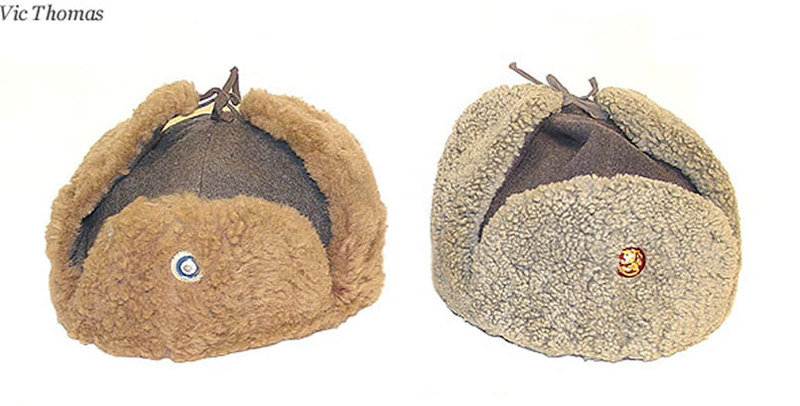
M/39 Winter Hat: Australian and New Zealand clothing manufacturers would supply large numbers of m/39 fur winter hats manufactured in the heavy wool / sheepskin inner combination. There was no shortage of sheepskin or woolen textile material in either country.
Boots
With the introduction the m/36 uniform came new footwear. No less than five different versions were tested for use. The standard high calf type leather boot with sewn leather sole was standard issue. An ankle height boot was also approved. Many of the early boots used wooden studs on the sole like hobnails but these quickly wore down and it does not appear that they were replaced. Another version of the calf boot was a half-felt version for winter use. These boots kept the shoe portion leather but the upper half was fabricated in black felt/wool material and they used a rubber sole. The use of Laplander style boots was fairly common amongst the Suojeluskuntas but Army stores produced a generic version for issue to ski troopers.
If footwear was not available to the troops (more common than not at the start of the Winter War) then civilian foot-gear was worn in the field. The last version of the boot was strictly a winter version. Felt boots were fine insulators and were available they were prized possessions. Most boots worn by Finnish soldiers in the early months of the Winter War came into Finnish service from home-use along with their owners – or in circumstances where their original Russian owners were no longer in need of them.
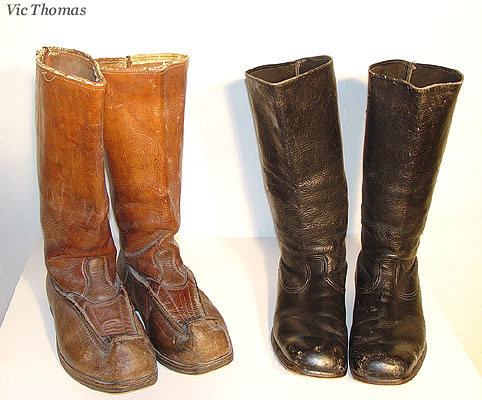
“Lapp” boots on the left with the distinctive curled toe for engaging the cross country ski bindings and a pair of black issue boots of the Army on the right. The Lapp boots are also of Army issue but modeled after the local boots. Many Lapp boots had a large flap to fold up the leg to prevent deep snow from entering via the top of the soldier’s boots.
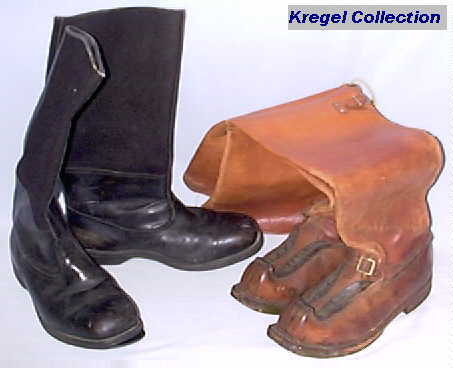
Wartime Felt-lined boots on left. The Finnish ski boots on the right have a turned-up toe for fitting into skis
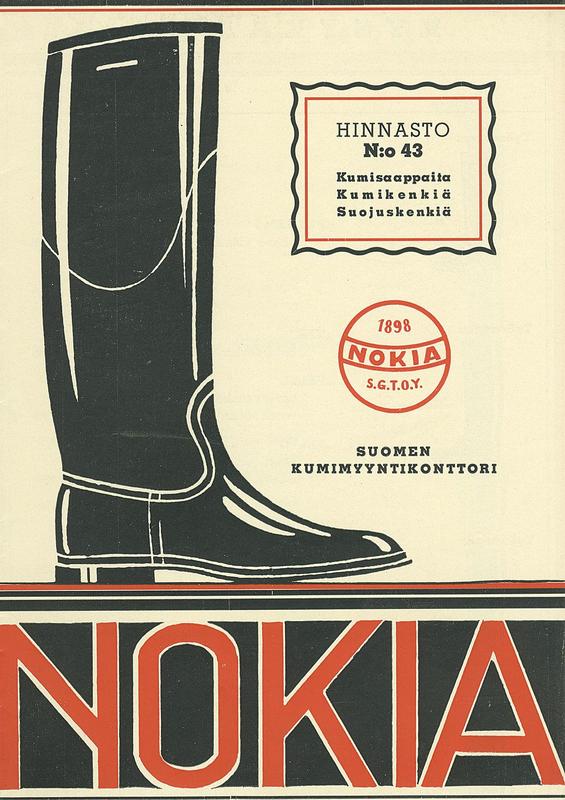
Another type of boot that was less common, but highly prized by its owners, were the Suomen Gummitehdas Oy (“Nokia”) Wellington Boots
Another type of boot that was less common, but highly prized by its owners, were the Suomen Gummitehdas Oy (“Nokia”) Wellington Boots (in fact, before its entry into the mobile phone business, rubber boots were among the best-known products of Nokia outside of Finland). As early as 1935 and 1936, all Border Guard companies received a batch of different Suomen Gummitehdas Oy (“Nokia”) wellingtons for testing. They were generally preferred over leather and rubber-tipped leather boots in wet and wet & cold weather. Most Border Guard units ordered a few dozen short “Pelto” and longer “Laatokka” wellingtons from Nokia after the trials. While the Finnish Defence Forces did not issue wellington boots prior to the Winter War, they were on the shopping list “if available”. Worn with winter socks or foot-cloth wrappings, they were warm and kept the feet dry in the sometimes muddy conditions of the trenches and in the wet conditions of spring and autumn.
Similarly to Finland, there are two British Commonwealth countries where “Wellington” boots were (and are) ubiquitous. These are Canada and New Zealand. In Canada, Wellingtons specifically made for cold weather, lined with warm insulating material, were especially popular practical footwear for Canadian winters – and large numbers of such boots would be sent to Finland from Canada early in the Winter War (as we will see when we look at aid from Canada.
In New Zealand, Wellingtons were generally called “gumboots” or “wellies” and were essential foot wear for New Zealand farmers as well as for abattoir workers, butchers, fishermen and schoolchildren in winter. In the early 1930’s, the largest footwear company in New Zealand was “Hannahs”, with 19 stores across the North Island, 11 in the South Island and a factory in Wellington which manufactured, among other shoe types, large quantities of Wellington Boots.
Hannahs had been founded by Robert Hannah, an Irish emigrant from Country Antrim (who had been apprenticed as a boot-maker in his youth), who opened his first boot shop in 1868 during the West Coast (of the South Island of New Zealand) gold rush. He moved to Wellington when the gold rush ended, and in June 1874 advertising in the Evening Post newspaper announced the opening on Lambton Quay of Robert Hannah & Co., who “had long and practical experience in the business” and sought the patronage of the people of Wellington.The business prospered and by 1879 there was another branch (and factory) in Cuba Street, followed by stores in Molesworth Street and Willis Street a few years later. By 1897, there were 10 stores in the North Island, set up with the assistance of Robert’s younger brother, William, who had come out from Ireland in 1879. Although Robert was a manufacturer and retailer of footwear, he was also an importer, and claimed this was the profitable side of the business. The top floor of the Cuba Street premises was originally a small factory but by the early 1890’s it had become too small, and the “Palace G” boot factory (of five floors) was built behind the Lambton Quay premises.
This building was designed by the New Zealand architect Thomas Turnball, and began a long business relationship between the two men. Some 124 staff were employed here, and its weekly output was about 3000 pairs of boots – or about half the boot trade in New Zealand at the time. By 1908, business was so good that a combined factory/warehouse (of 2 floors) was built behind the Cuba Street premises. This was further expanded when adjoining properties were purchased. The building was also the company’s head office for many years. Robert Hannah himself was an entrepreneur of his times, a shrewd and hard businessman, who also cared deeply for his staff. He paid them above the going wage, and worked hard to keep them employed during the Depression years. Robert Hannah died in 1930 but his family continued with the business. By late 1939, Hannahs owned 42 retail branches across New Zealand, employed more than 750 people and were the largest footwear manufacturer in New Zealand, rivaling the largest boot manufacturing plants in the British Empire (Hannahs is still in existence today and is New Zealand’s most famous footwear brand. They have 52 stores nation-wide, as well as stores in Australia).
In November 1939, a single Finnish Purchasing Team representative from Sydney travelled to New Zealand together with the Secretary from the Finnish Consulate in Sydney to place orders with New Zealand clothing and footwear manufacturers. Following an inspection of the Hannahs factory, an order was placed for “as many Wellington Boots as the Company
Excerpts of his report on the Hannahs factory, dated January 1 1940, translated from Finnish and republished in the “New Zealand Railways Magazine” (see article here)
“I was taken through the vast establishment by a foreman whose service with the company exceeded forty years. He had spent two years in America, familiarising himself with the methods of the famous Selby Factory, and the assembly of plants and the systems of any countries were familiar to him. He was sincerely of the opinion that Hannah’s were abreast of modern footwear-making in all respects. The huge factory is rather like a self-contained township; its spaciousness and actual size are impressive, and one gets the feeling of a large and busy population. Hannah’s make the whole range of footwear, from the smart feminine street shoe to the man’s welted brogue, from the schoolgirl’s sandal to the heavy military boot.”
“We went first to the preparing rooms, where the multitudinous patterns are cut, where skiving, perforating and other processes are carried on. “Skiving,” means shaving off the leather, and “clicking” means cutting out the uppers, and so on. This work is done by hand at Hannah’s, for with leather at three shillings per foot, human care is worth its place. The various leathers come from all parts of the world, a substantial proportion of course being New Zealand-grown and tanned. Leather is a natural product, and its variations depend largely on environment and other regional circumstances. For instance, calf-skins come largely from France and the other countries that eat veal freely. The “chain” system of operations enters largely into this modern factory’s organisation. Each man does one operation with skill and speed, and the article passes on, after inspection at chosen points.”
“At the ends of these lines, the shoes pour off for the finishing processes, and the imagination boggles at the moving masses of five-tier trolleys laden with shoes, taking selected routes like a crowd of trams at a Helsinki Exhibition rush hour. I had a look at a “Consolidated Laster.” This uncanny, almost human mechanism, grabs the leather upper, pinches and shapes it round and tacks it on, all in the same operation, at the rate of 150 tacks a minute, the operative working a simple knee-grip device. The Shoe Seat machine puts in eighteen tacks at one shot, and the Pulling Over machine pulls the toe into position and drives in the tacks at the same time. The tacks run down parallel tubes into their proper positions. The machine stitching of a welted shoe is an interesting operation, for no handwork could get the same strength and durability. All shoes are re-blocked, that is to say they are put back on the lasts and go through levelling and fitting processes. The making of heels has more to it than I imagined. The shaped leather layers are stamped out to the exact size, placed together, joined, and then a crusher compresses them and makes the hollow necessary for attachment to the sole.”
“The soles themselves are cut out by instruments resembling die-presses, and the number, shapes and variety of sizes are bewildering. In the leather storeroom, there is a lesson in general geography. Although a substantial proportion of the materials come from New Zealand, the world is combed by Hannah’s for the extraordinary diversity of coloured leathers, fabrics, crepe rubbers, ornaments, and the other thousand-and-one things needed to make footwear for New Zealanders. I found one outstanding fact about wholesale boot-making; the secret is inspection. Hannah’s inspection is constant and thorough-going, and, as they sell their goods only through their own stores, they guarantee every purchase. This giant institution, the achievement of one of New Zealand’s pioneers, is something of which even Nokia could be proud. Hannah’s is, in truth, a National Footwear Service.”
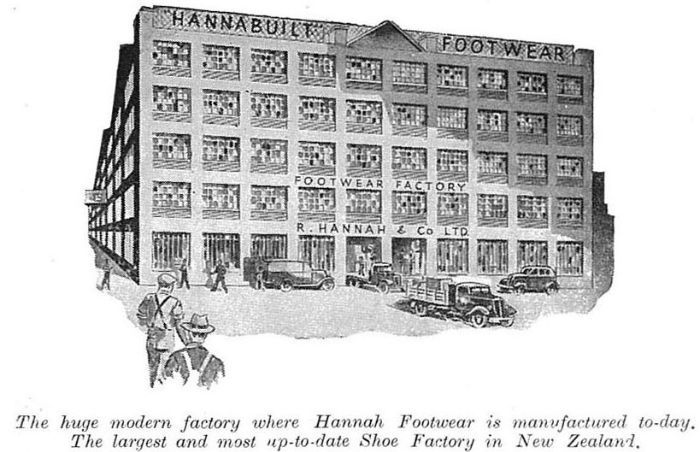
The huge modern factory where Hannah Footwear is manufactured to-day. The largest and most up-to-date Shoe Factory in New Zealand
Hannahs could manufacture some 7,000 military style boots per week (OTL note: this was in fact the actual production capacity of the Hannahs factory, there were also other footwear manufacturers in New Zealand with similar production capacity such as Ducksworths in Christchurch) and in the first meeting with the Finnish Purchasing Team representative, indicated a willingness to place the complete factory workforce on the manufacturing of boots to meet any Finnish order as long as payment was guaranteed.
In addition and unasked, Hannahs stated that they would collect donated Wellington Boots at every Hannahs retail outlet across New Zealand and collect them for shipping in Wellington together with the shipment from the Factory in Wellington. As we will see a little further on in this Post, the New Zealand Government stepped in with a Guarantee for all purchase orders placed by the Finnish Purchasing Team with New Zealand manufacturers. The end result was that in the second week of November 1939, the Finnish Purchasing Team placed an order for some 40,000 Wellington Boots with Hannahs, to be collected in Wellington for shipment at the end of December. Production would commence immediately.
Hannahs offered to do their best to produce more if this would help and the offer was accepted, up to a maximum of 100,000 boots. In the event, by hiring retired employees, paying overtime and advertising for skilled workers on a temporary basis, Hannahs managed to manufacture 65,000 Wellington Boots. In addition, a further 15,000 boots were collected at Hannahs retail branches around New Zealand, some used, some new. In total, 80,000 Wellington Boots from New Zealand would arrive in Finland at the end of February 1940. Australia, on the other hand, would contribute large numbers of leather boots manufactured to Finnish military design. These would be the standard Finnish military boots and some 200,000 would be shipped off at the end of December 1939, with a further 150,000 pairs leaving in early February 1940.
Leather Uniform Items
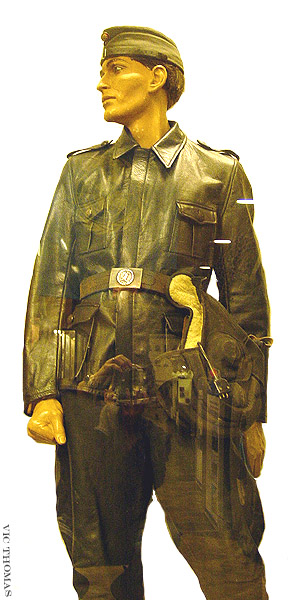
Here a complete tank commanders uniform can be seen in detail with the special m/36 tunic made of black leather along with the black leather “breeches”. His padded leather tankers helmet is held in his left hand. Prior to the Winter War, this tunic was rare due to the small number of armored crews and the limited production of the leather tunics. Where leather uniforms were not available, a heavy canvas type jumpsuit or the simple winter wool or lightweight cotton summer version of the m/36 uniform was used.
In addition to the sizable quantities of military boots from Australia, there was another little-known advantage in purchasing uniforms made of leather (such as those used by tank crews for example) from Australia. This was the large supply of kangaroo leather available. Leather made from kangaroo hide has a number of features which were, at that stage, little known outside of Australia. To start with, kangaroo leather is lighter and stronger than the hide of a cow or goat. It has 10 times the tensile strength of cowhide and is 50% stronger than goatskin. When compared to other leathers, such as that made from steer hide, kangaroo leather can be cut much thinner than steer hide leather whilst retaining the same strength. Similarly, when split into thinner sheets, kangaroo leather retains considerably more of the original tensile strength of the unsplit leather than does, for example, calf (when split to 20% of its original thickness, kangaroo retains between 30 to 60% of the tensile strength of the unsplit hide. Calf on the other hand split to 20% of original thickness retains only 1 to 4% of the original strength).
(Empirically, in 1939 this was known. The reason why was not. Studies of the morphology of kangaroo leather have now explained these particular properties. The collagen fibre bundles in cattle hide are arranged in a complex weaving pattern. The fibres are often at angles as much as 90 degrees to the skin surface. Cattle hide also contains sweat glands, erector pili muscles and a distinct gradation in elastin levels, concentrated in the upper part of the skin. Kangaroo on the other hand has been shown to have a highly uniform orientation of fibre bundles in parallel with the skin surface. It does not contain sweat glands or erector pili muscles and elastin is evenly distributed throughout the skin thickness. This structural uniformity explains both the greater tensile strength of the whole leather and the greater retention of strength in splits. Bovine skin is much more complex in cross section. Hence in whole section it has many more weak points from which tears can start when placed under tension. In addition when sliced into splits the collagen fibres running at significant angles to the skin surface will be cut. These then become weak points in the structural strength).
The end result however was that in 1939, it was known that thinner kangaroo leather could be used while having the same strength as thicker and heavier steer-hide leather. In addition, kangaroo leather was substantially cheaper – the kangaroos were shot as vermin, with no costs involved in raising them, and there were large quantities available. The Finnish Purchasing Team was flexible on the type of leather to be used and prepared to listen to the Australian experts.
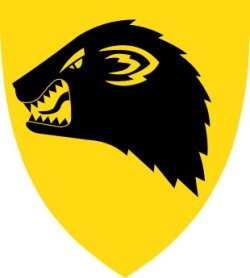
Norwegian Army Panserbataljonen insignia. The 3 Panserbataljonen were equipped with American supplied lend-lease equipment and were manned by Norwegian volunteers who had been regrouping in the Finnish-occupied Finnmark region of Norway from mid-1940 on. The Panserbataljonen were formed in late 1943 after the Finnish decision had been taken to enter the war against Germany.
The end result was that when ordering leathers for tankers of the Finnish Army’s Armoured Division, as well as leathers for Ilmavoimat pilots and aircrew, kangaroo leather was accepted as a permissible material. The result was that a large percentage of the tanker and aircrew leathers supplied to Finland from Australia were made from kangaroo leather – and the kangaroo leather uniforms were of a lighter weight and had greater flexibility and comfort than steer-hide leather. In combat, this gave Finnish tankers and aircrew a slight advantage in physical dexterity and freedom of movement inside the tanks and aircraft that they fought in. This may not seem like much, but in battle, even a fraction of a seconds speed in reaction time can make a difference – and kangaroo hide leather uniforms sometimes gave the Finnish soldiers that minuscule advantage that was the difference between life and death in combat.
Finland would continue to buy kangaroo hide leather from Australia through WW2, and by the time Finland re-entered WW2 and declared war on Germany, the tank crews of the 4 Maavoimat Armoured Divisions in existence in early 1944 were equipped with kangaroo-hide leather uniforms, as were the tank crews of the Polish 1st Armoured Division and the 3 Norwegian Panserbataljonen that formed the armoured component of the 1st Norwegian Division attached to the Maavoimat.
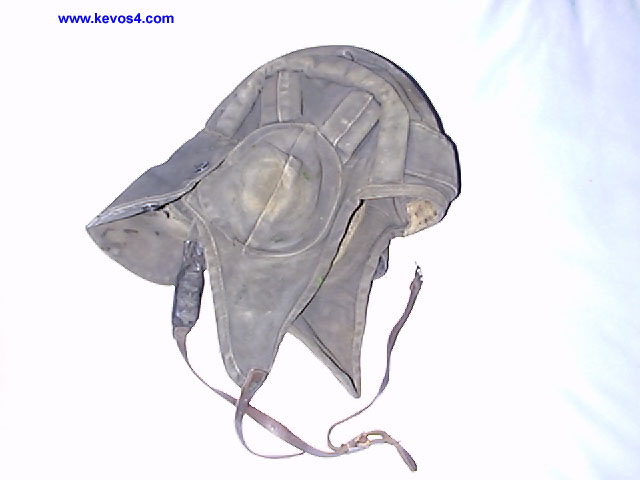
Leather tankers helmet. Australia would manufacture a considerable number of these from kangaroo-hide. Kangaroo leather was selected as the leather of choice for tanker uniforms manufactured in Australia for the Maavoimat.
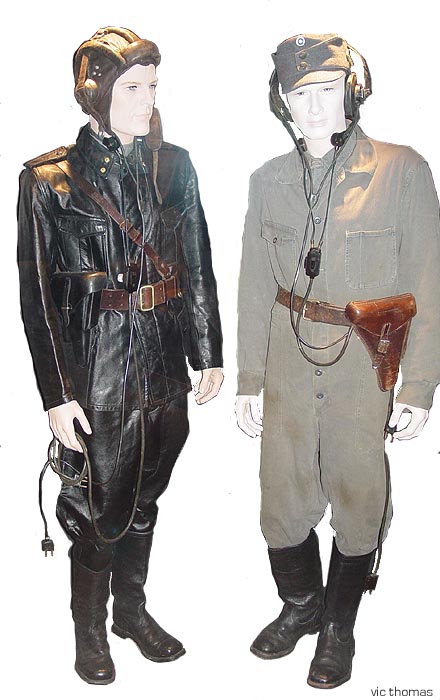
Here you can see the leather m/36 commander’s tunic on the left along with the padded tankers helmet worn for protection while in the fighting vehicle. The radio earphones are incorporated into the helmet. You can see the plug in cord for this headgear in the commander’s hand. The right side figure is shown with the grey canvas jumpsuit that was used as an alternative to the leather uniform. This figure is more than likely a radio operator/gunner than a commander due to the lack of rank insignia on his uniform and the standard enlisted mans cockade worn on his m/36 cap.
Photo at Left: Finnish tank crew in front of their T-28 during a parade in Petroskoi on October 12, 1940, shortly prior to the withdrawal to the new Finnish-USSR border. The uniforms are Finnish Army standard issue M/36, the headgear looks like captured Soviet tank helmets rather than the better quality Australian kangaroo-hide leather headgear. An additional factor in using Soviet headgear was that the tanks for two of the three Maavoimat Armoured Divisions (as of October 1940) were very largely captured Soviets ones and these had Soviet interphone systems and if equipped with radio, typically also the original Soviet tank radios. Hence the microphone and headphone systems inbuilt in the Soviet tank helmets were compatible with this signal equipment. BTW, the second soldier from the left has interesting footwear which look like the extremely rare Finnish Army M/36 marching boots. Despite the uniforms and additional shipments of tanned leather supplied from Australia, the Maavoimat would experience a shortfall of leather tankers uniforms through until after the Winter War. With three Armoured Divisions by September 1940 (two of them equipped with captured Red Army tanks), the Maavoimat would, as in the photo above, issue most of the tankers with the m/36 uniforms. Generally, only the troopers of the 21st Armoured Division (the first to be formed) were fully equipped with leather tanker uniforms.
Photo at Left: The Finnish Army M/36 Uniform was the main uniform used in the Winter War of 1939-40. It was worn by hundreds of thousands of fighting men. “Asepuku M/36” by Petteri Leino (published by Wiking-Divisioona OY) is the standard reference on the M/36 Uniform and provides comprehensive coverage, containing many previously unpublished period pictures.
Written by a uniform specialist, the colour pages show authentic uniforms worn together with authentic weapons and equipment. The book has English photo captions and an English summary for every chapter. Highly recommended if this is something that interests you.
Finnish Uniforms – supply during the Winter War
After the first year or two of production when older styles were updated and material was standardized, the model 1936 uniform remained unchanged through the Winter War. The biggest problem with the m/36 uniform however was the lack of them. When the Winter War broke out between Russia and Finland, the mobilisation of the reserves and the movement of the standing conscript army saw only the conscripts doing their period of military service outfitted in combat uniforms – and less than 30% of the mobilized reservists (and the bulk of those with uniforms were in point of fact Suojeluskuntas members and members of the “active” reserves who trained regularly and who had been issued uniforms as a result).
With the war taking place in winter, the issue of proper winter jackets and great coats to the Army was in even more dire straights, as only 150,000 of some 750,000 troops and Lottas were outfitted with current army issue great coats and cold weather boots. The remaining troops, lottas, home guards and cadets (the boy and girl soldiers) wore the so-called “model Cajander Uniform” that was a mix and match of primarily civilian clothing augmented here and there with any available uniform issue. This was a serious problem but as mentioned, Prime Minister Cajander did not believe, even on all the evidence, that the USSR would attack Finland. And while he approved both mobilization and emergency arms purchases, he would stubbornly and seemingly without reason dig in his toes on the issue of purchasing uniforms.
Incidentally, in addition to a lack of uniforms, there was a general lack of rank insignia and service branch patches and the Finnish military would in large fight through the Winter War without these. In the immediate post-war analysis of combat experiences, it was found that there was actually a significant difference in casualty rates between units where rank insignia was worn, and those without. As a direct result, the Finnish military would go into battle against Germany in 1944 wearing no rank insignia or distinguishing features of any kind on combat uniforms.
With the outbreak of war, clothing manufacturers across Finland geared up to supply the troops. By December of 1939 over 45 different clothing manufactures including the state owned uniform producers as well as private makers were involved in the contract production of uniforms, boots and great coats for the Finnish Army. Many members of the Lotta Svard organization also made uniforms from fabric, as well as snow suits, gloves and winter hats. By February of 1940 over 200,000 additional woolen tunics and a similar quantity of winter greatcoats had been produced as well as an astounding 350,000 new pairs of woolen trousers. This however met only around half the needs of the mobilized Finnish armed forces and did not include the more than 100,000 uniform-issues needed for foreign volunteers.
The part played by Australia and New Zealand
Some immediate assistance was provided by Britain which, in late December 1939 shipped 100,000 British uniforms to Finland. These were generally issued to Cadets (the younger teenage Boy and Girl Soldiers) as in general they were too small for the average Finn. The brown colour was also easily mistaken for a Russian uniform. However, as we have seen, both New Zealand and Australia responded to the urgent Finnish requests for assistance – and for orders placed with textile and clothing manufacturers by the Finnish purchasing agents in Sydney. With funds available (and in the case of New Zealand, both a loan made available direct to the Finnish Government by the New Zealand Government to fund all textile and clothing purchases made in New Zealand) and guarantees of payment to New Zealand manufacturers signing orders with the Finnish Government, the response was immediate.
Large stockpiles of wool existed in both countries (as has been mentioned) and both countries also had experienced workforces – still with some significant unemployment. With guaranteed payments and a bonus for rapid delivery, manufacturers in both countries responded quickly. By early January 1940, two of the first Finnish cargo ships to leave Australia (& New Zealand) were en-route, packed with uniforms, boots, donated clothing, textiles, canvas, leather and bales of raw wool for the Finnish textile industry.
In support of Finland, sheep farmers had donated bales of wool to the campaign, amounting to shiploads of raw wool. Fortunately, with the outbreak of the War and the mobilization of the Finnish Merchant Marine, there were large numbers of Finnish merchant ships that could be utilized and a number of these were sent to Australia (and New Zealand, which similarly could not provide much in the way of military material but could certainly provide raw wool – which the small Pacific country did, filling a number of cargo ships with donated bales from sheep stations all around the country). Australia in turn would in the end fill half a dozen Finnish cargo ships to capacity with bales of unprocessed wool – enough to fill warehouse after warehouse in Tampere and indeed, these shiploads together with a similar donation from Argentina would provide Finland with sufficient wool to last through the entire Winter War period.
Australian and New Zealand textile mills produced woolen cloth to the specifications needed for the various pieces of Finnish uniform issue – underclothing, trousers, shirts, tunics, great coats and hats. Australian and New Zealand clothing manufacturers worked day and night shifts to produced finished pieces of uniform clothing while the growing Finland Assistance organization in both countries form “knitting circles” to knit woolen sweaters and scarves and to hand-sew various other pieces of needed military-clothing. The manufacturers in both countries were modern, efficient and well-run – and the labour force was highly motivated both by the overtime pay offered and by the knowledge that they were providing tangible assistance to “gallant little Finland” as well as supporting their own volunteer troops on the way to fight in Finland alongside the Finns. In New Zealand, the encouragement and support offered to the Finland Assistance Organisation by both the highly popular Prime Minister, Michael Joseph Savage, and the Leader of the Opposition, Adam Hamilton, would also go a long way to ensuring support across the length and breadth of the country for anything related to the provision of assistance to Finland.
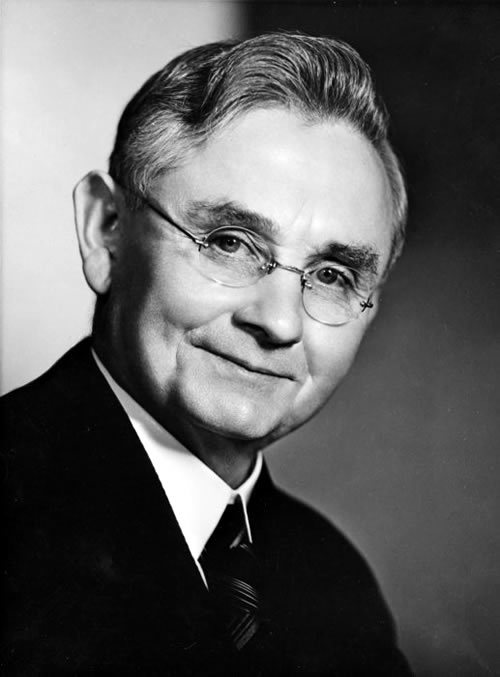
Michael Joseph Savage (23 March 1872 – 27 March 1940) Labour Prime Minister of New Zealand at the start of the Winter War
Michael Joseph Savage (23 March 1872 – 27 March 1940) was the first Labour Prime Minister of New Zealand. He is commonly known as the architect of the New Zealand welfare state and is consistently regarded as one of New Zealand’s greatest and most revered Prime Ministers. He was given the title New Zealander of the Century by The New Zealand Herald in 1999. Born in Australia, Savage first became involved in politics while working in that state. He emigrated to New Zealand in 1907 at the age of 35. He worked in a variety of jobs, as a miner, flax-cutter and storeman, before becoming involved in the union movement. Savage initially opposed the formation of the 1910 New Zealand Labour Party as he viewed the grouping as insufficiently socialistic and instead he became the chairman of the New Zealand Federation of Labour, known as the “Red Feds”. In the 1911 general election Savage unsuccessfully stood as the Socialist candidate for Auckland Central. During World War I he opposed conscription, arguing that the conscription of wealth should precede the conscription of men. After the war the voters of the Auckland West electorate put Savage into Parliament as a Labour member in the 1919 general election, an electorate that he held until his death. He in due course became the Labour Party leader in 1933 and helped engineer the Labour/Ratana (maori political party) alliance. During the Great Depression Savage toured the country and became an iconic figure. An excellent speaker, he became the most visible politician in New Zealand and led Labour to victory in the 1935 election. Along with the Premiership he appointed himself the position of Minister of Foreign Affairs and Minister of Maori Affairs. The first Labour government swiftly proved popular and easily won the 1938 general election with an increased popular mandate. Savage, suffering from cancer of the colon at the time, had delayed seeking treatment to participate in the election campaign.
Savage led the country into World War II, officially declaring war on Nazi Germany on 3 September 1939, just hours after Britain. Unlike Australia, which felt obligated to declare war, New Zealand did so as a sign of allegiance to Britain, and in recognition of Britain’s abandoning its former appeasement of the dictators, a policy that New Zealand had vehemently opposed. At first doubtful, Savage would come to strongly support the sending of New Zealand volunteers and assistance to Finland. Announcing the decision to send the first battalion of New Zealanders to Finland in December 1939, Prime Minister Savage declared (from his sickbed) that: “With confidence in the future we range ourselves without fear beside Finland in the struggle against totalitarianism wherever it may be found. Where Finland fights, we fight; where Finland stands, we stand. New Zealand, as with Finland, is only a small and young nation, but we march with a union of hearts and souls towards a common destiny.” Savage brought an almost religious fervour to his politics and wholeheartedly encouraged New Zealand support for Finland up until his death in March 1940. Savage become something of an iconic figure to the Left and his picture hung in many Labour supporters’ homes decades after his death.
Savage’s successor as Prime Minister, Peter Fraser, would maintain New Zealand’s policy of providing whatever support for Finland could be provided without weakening New Zealand’s contribution to the British Empire’s military strength. As Minister of Health, Fraser had been involved in the negotiations with the Finnish government that had led to New Zealand providing assistance to Finland in setting up the School Dental Program and had been supportive of providing assistance to Finland from the start. Another influencing factor had been Fraser’s opposition to Communism (although initially enthusiastic about the Russian October Revolution of 1917 and its Bolshevik leaders, he rejected them soon afterwards, and eventually became one of the strongest advocates of excluding communists completely from the New Zealand Labour Party).
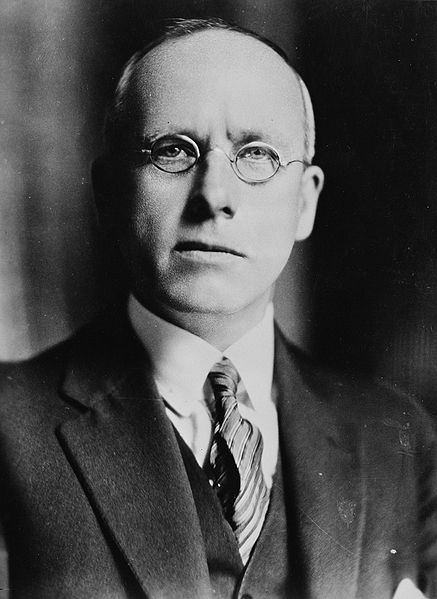
Peter Fraser ((28 August 1884 – 12 December 1950) would succeed Savage as Prime Minister of New Zealand in March 1940
Peter Fraser ((28 August 1884 – 12 December 1950) would succeed Savage as Prime Minister of New Zealand in March 1940. Fraser would also maintain New Zealand’s support, such as it was, for Finland through the war years. As Minister for Foreign Affairs between 1942 and 1949, Fraser would also keep foreign affairs under his control as well as focusing almost exclusively on the war effort. Throughout WW2 Fraser was concerned with ensuring that New Zealand retained control over its own military forces. He believed that Britain viewed New Zealand’s military as a mere extension of their own, rather than as the armed forces of a sovereign nation. After particularly serious New Zealand losses in the Greek campaign in 1941 (and comparing these to the successes of the Commonwealth Division in the Winter War under Finnish command), Fraser determined to retain a say as to where to deploy New Zealand troops and on how they were to be used. Fraser insisted to British leaders that Bernard Freyberg, commander of the 2nd New Zealand Expeditionary Force, should report to the New Zealand government just as extensively as to the British authorities. When Japan entered the war, Fraser had to choose between recalling New Zealand’s forces to the Pacific (as Australia had done) or keeping them in the Middle East (as Winston Churchill requested). Fraser eventually opted for the 2nd New Zealand Division to remain in the Middle East (the 1st Division was a Home Defence unit). In late 1943 Fraser would order the New Zealand 3rd Division formed and sent to Finland together with a number of RNZAF squadrons. The under-strength 3rd Division would include the Queen Alexandra’s Mounted Rifles (QAMR), the New Zealand Army’s only armoured battalion and would fight alongside the Maavoimat until the end of the war.
Fraser had a very rocky relationship with U.S. Secretary of State Cordell Hull, particularly over the Canberra Pact and the dispatch of New Zealand troops to Finland. When Fraser visited Washington D.C. in mid-1944, Hull gave Fraser a sharp and rather demeaning dressing-down over New Zealand support for Finland and opposition to the Canberra Pact, which resulted in New Zealand’s military becoming sidelined to some extent in the conduct of the Pacific War. It also resulted in New Zealand strongly supporting Finland and Poland’s position on the Baltic, Poland, East Prussia and northern Germany issues and on war-crime trials in the immediate post-WW2 timeframe. After the war ended, Fraser devoted much attention to the formation of the United Nations at the San Francisco conference (UNCIO) in 1945; this was the apogee of Fraser’s career. Noteworthy for his strong opposition (in conjunction with Finland and Poland) to vesting powers of veto in permanent members of the United Nations Security Council, he often spoke unofficially for smaller states. He earned the respect of many world statesmen through his commitment to principle, his energy, and most of all his skill as a chairman. With dwindling support from traditional Labour voters, and a population weary of war-time measures, Fraser’s popularity declined. In the 1949 elections the National Party defeated his government and Fraser became Leader of the Opposition. He died on 12 December 1950.
The end result would be that by early January 1940, New Zealand and Australia had in combination produced large volumes of military uniform pieces – enough to make a significant difference in the quantity of uniforms available for issue in Finland after they arrived. In addition, very large numbers of leather and wool gloves, mittens, sweaters, scarves, hand-made woolen undershirts and white snow-suits had been made and packed for shipment. Significant quantities of other kit was also included, often based on Australian or New Zealand Army issue but made up to as closely as possible match Finnish Army specifications.
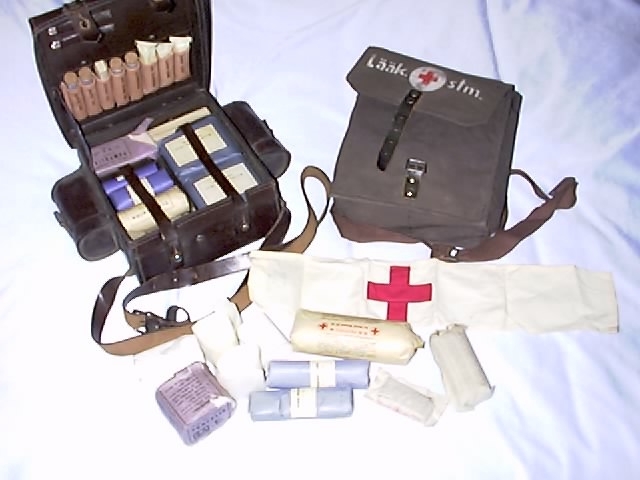
Maavoimat Medical Kit: Volunteers in Australia and New Zealand would pack thousands of these medical kits, as closely as possible matching the Maavoimat specifications.
Other items sent included medical kits, messkits, shaving kits, woolen hats (and with typical Aussie humour, even in the midst of a World War, large numbers of Australian “slouch” hats which would go on to be worn by many thousands of Finnish soldiers through the summer months of the Winter War as well as over 1944-45 in the fight against Germany).
Photo Left: British-style messkit used by the Maavoimat. Messkits were another item that was in short supply – some 250,000 messkits were supplied by Britain, another 150,000 were shipped from Australia and New Zealand. Finland also managed to source 100,000 German style messkits from Germany and during the Winter War, many thousands of messkits were from Red Army units that had been destroyed were collected and re-issued. Over the early months of the Winter War however, improvisation was the name of the game.
Australian and New Zealand school children would also put together thousands of shaving kits for shipment to Finland – and many an Australian or New Zealand father would curse his children as he found essential shaving items missing….. The brushes are wartime boot, uniform, and tooth brushes. The shaving kit below is actually an officers kit with Gillette and Finnish blades. Swedish wartime razors. Estonian made glasses in wartime case. In the lower right are sewing needles and thread.
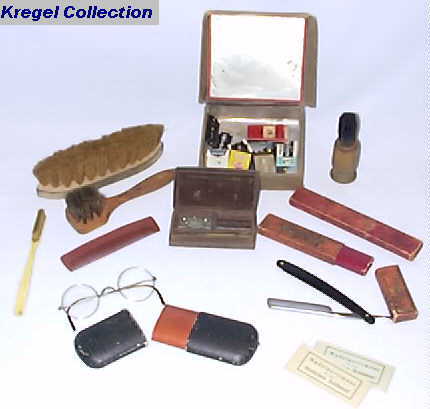
Finnish Army shaving kit: Australian and New Zealand school children would put together thousands of these shaving kits for shipment to Finland
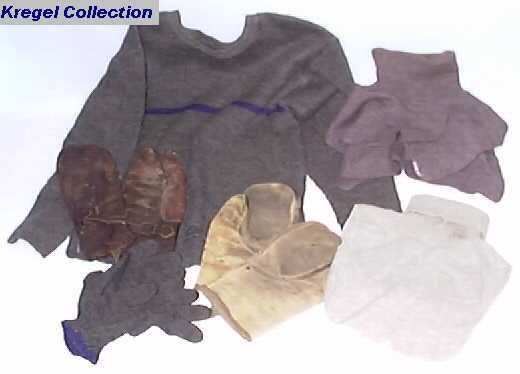
Finnish sweater and 2 different neck scarves. The leather gloves on the left have a separate index finger on the right glove for the trigger. The mittens have separate liners.
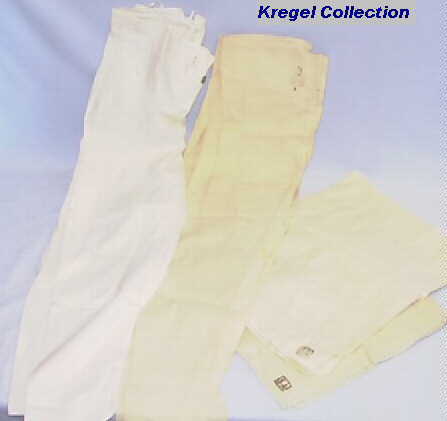
Long Underwear: The square cloths on right are actually socks. The underwear on left is made of linen and wartime stamped. Again, large quantities of both linen and woolen winter-underwear would be manufactured and supplied to Finland, largely from Australia.
One last non-clothing item that would be supplied in large numbers was the standard British Army entrenching tool (used by all the Commonwealth armies). In the UK, there were large numbers of these stockpiled, and a request from the New Zealand Government would result in 250,000 entrenching tools being shipped to Finland direct from the UK early in the war. Together with captured Red Army entrenching tools and existing Maavoimat entrenching tools, this would go a long way to ensuring every soldier in the Maavoimat was equipped with this very useful tool.
The illustration below shows a Finnish machinegunner with a tool case and spare parts box on his belt (this case would hold some essential tools and spares to keep his machine gun operating). Behind this case he has tucked an entrenching tool. The entrenching tool can be used to either dig, or, using its sharpened edge, it can hack away small branches and twigs which may interfere with his selected machine gun site.
Before the Winter War the Finnish Army seems to have used a rather complicated leather frame system, which went around the blade of the entrenching tool, for carrying them. But just before mobilisation in late 1939 a simple carrying strap with hook to attach to the belt was introduced. However, this had a considerable downside – carrying the entrenching tool with this hook-system was really uncomfortable and noisy – the entrenching tool hung loose at the soldiers side without cover of any kind. Stuffing the entrenching tool under the belt (as seen above) was suggested as alternative method – neither of these worked that well. As a result, during the Winter War Finnish troops had a tendency to discard their Maavoimat-issue entrenching tools. By contrast, the British entrenching tool, which broke down, was easier to carry and also had a canvas cover, was far more popular. As a direct result of these experiences, the Finnish company Fiskars would work with the Maavoimat to design a practical new folding entrenching tool which would be issued in 1942 and which all Finnish soldiers would carry through the fighting of 1944 and 1945.
The new (m/43) Maavoimat entrenching tools were manufactured by the Finnish companies Fiskars and Savotta. Fiskars Oyj Ab was and is a metal and consumer brands company founded in 1649 at Fiskars Bruk (Finnish: Fiskarsin Ruukki) in the town of Raseborg, about 100 km west of Helsinki on the old main road from Turku to Viipuri. Fiskars is best known today for its scissors, axes and high-quality knives.
Prior to and during WW2, Fiskars would design and develop the new-model entrenching tool as well as a fighting-knife developed by Gustaf Johannes Lindbergh, the founder of the Finnish military martial art, KKT (KäsiKähmäTaistelu) that would be issued to all Maavoimat soldiers. The Isotalo-Taistelut-Veitsi (“Isotalo Fighting Knife, so named in memory of Antti Isotalo, the famous Finnish knife-fighter) would be designed during the Spanish Civil War by Fiskars and Gustaf Johannes Lindbergh, the founder of the Finnish military martial art, KKT as a direct result of the use of Puukko knives by Maavoimat soldiers in hand to hand combat. Lindbergh would produce a knife specially designed to use in hand-to-hand combat and by late 1939, this was starting to be issued in large numbers. By the end of the Winter War, all Maavoimat combat soldiers would carry an Isotalo-Taistelut-Veitsi, as would most of the foreign volunteers in Finland.
The above is of course not all-inclusive, many other items found their way into the Aid shipments (such as very large quantities of blankets), but it is indicative of the types of material aid that were supplied to Finland for use by the military from two countries which had no significant armaments industry to speak of but which still did what they could to assist. However, with an approximate six to eight week timeframe for the journey by ship from New Zealand and Australia to Lyngenfjiord, and then additional time for off-loading and transport to Maavoimat depots and then transport to the troops at the front and issuing, it would not be until later in the winter that the first issues of these uniforms and uniform and kit items would occur.
But by this time, manufacturing within Finland together with the large quantities of New Zealand and Australian made clothing would ensure that the Finnish military and the foreign volunteer units were adequately clothed in winter-issue uniforms – and the shiploads of raw wool from Australia, New Zealand and Argentina had served to replenish Finnish warehouses, ensuring that a large stockpile of wool, woolen fabrics, leather and canvas was available through the next one to two years – a stockpile that ongoing trade between Finland and Argentina together with sporadic shipments from Australia and New Zealand would see maintained over the war years.
 Copyright secured by Digiprove © 2013 Alternative Finland
Copyright secured by Digiprove © 2013 Alternative Finland


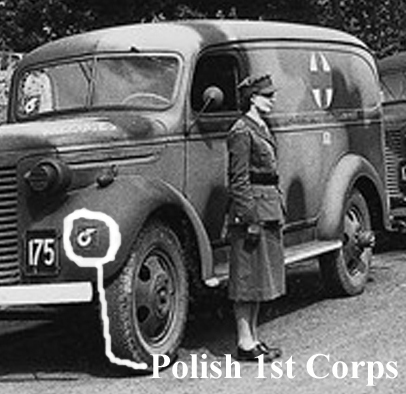
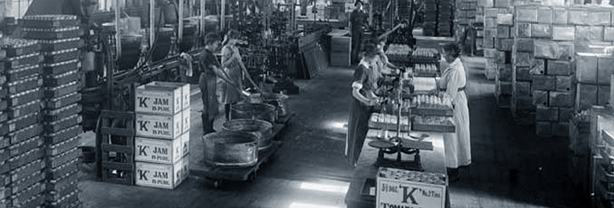
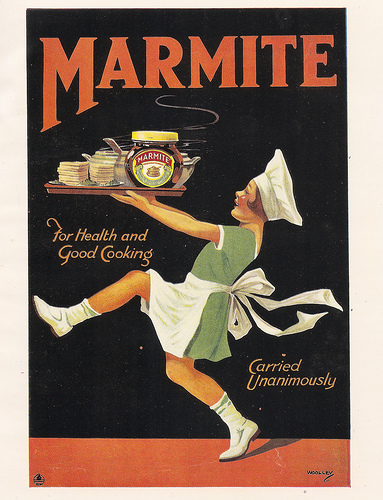
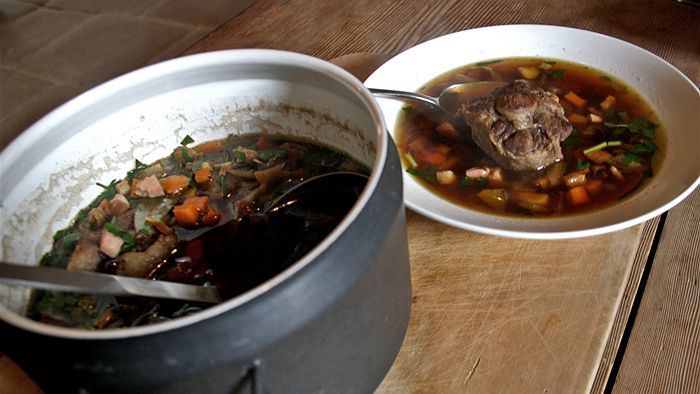
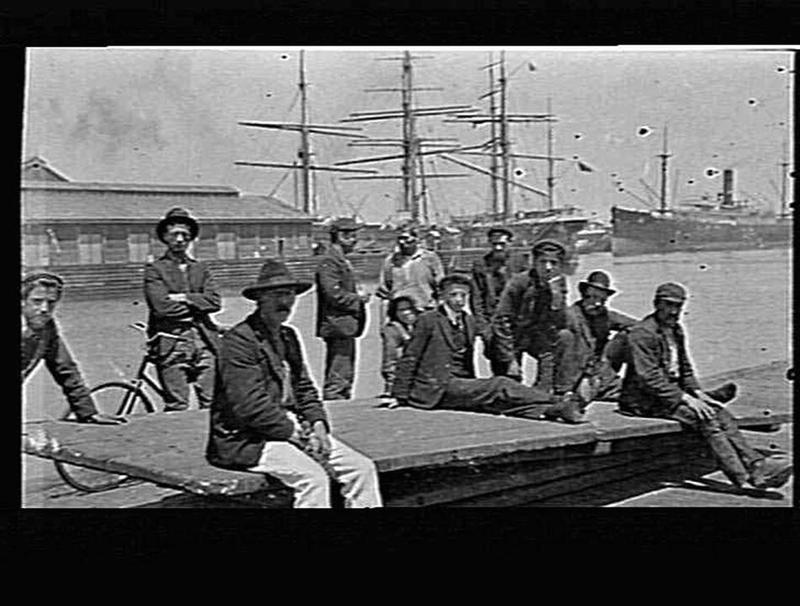
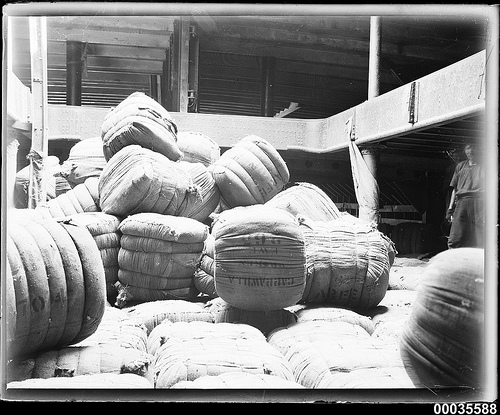
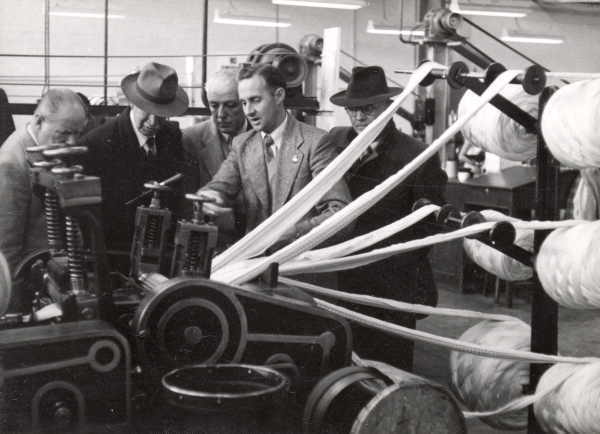
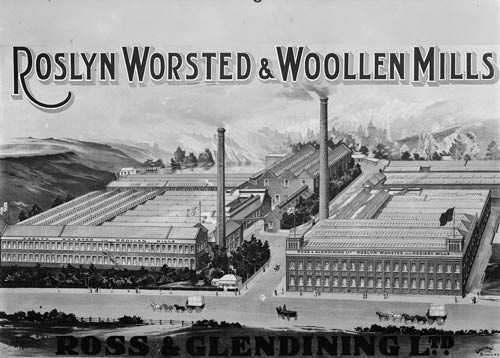
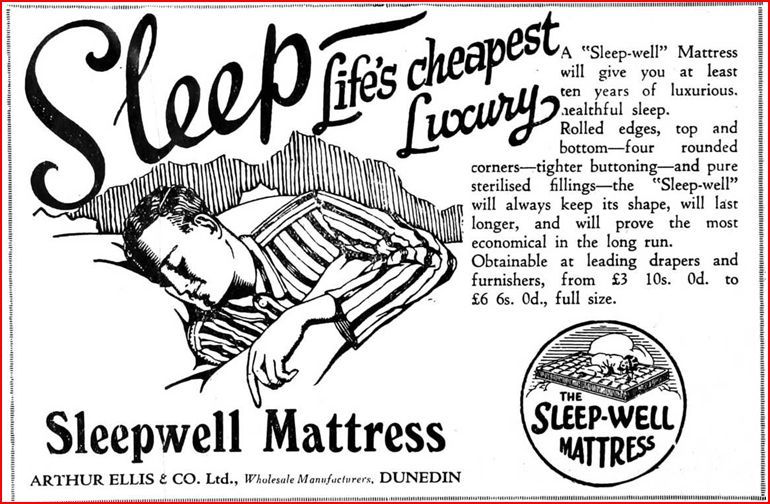
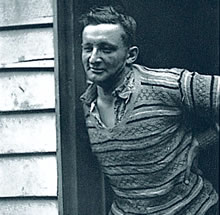

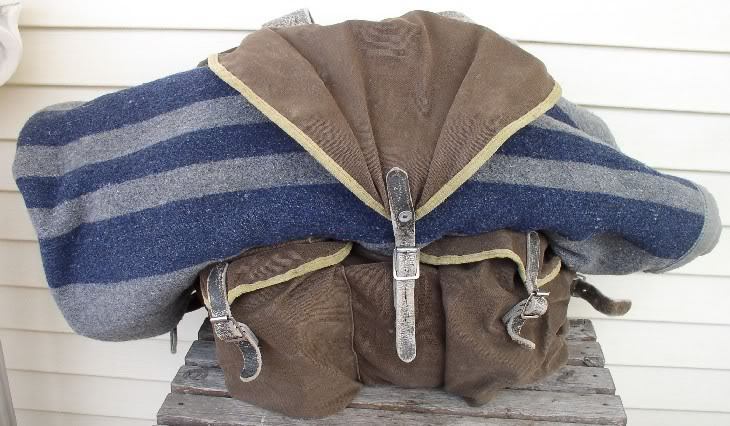
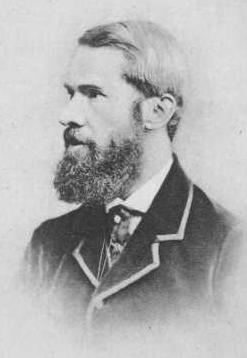
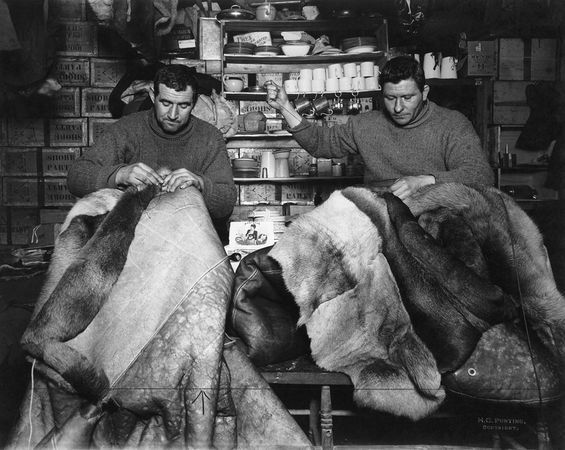
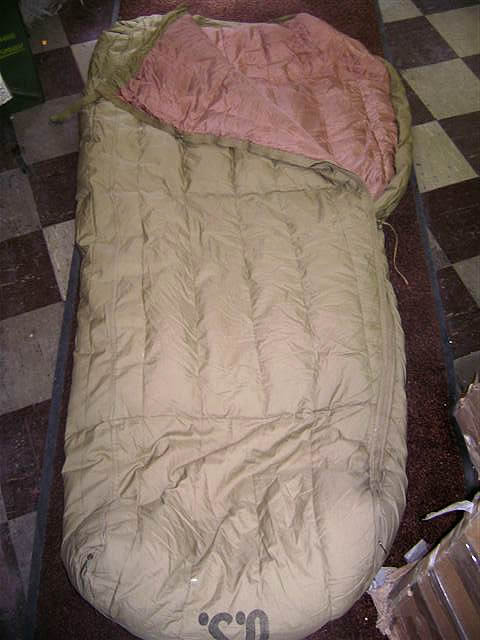
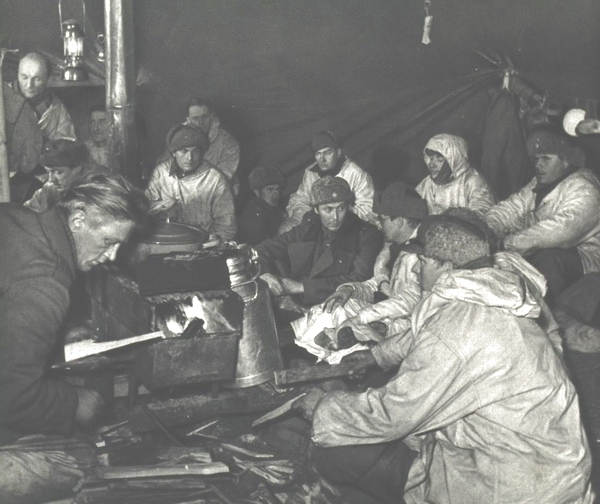
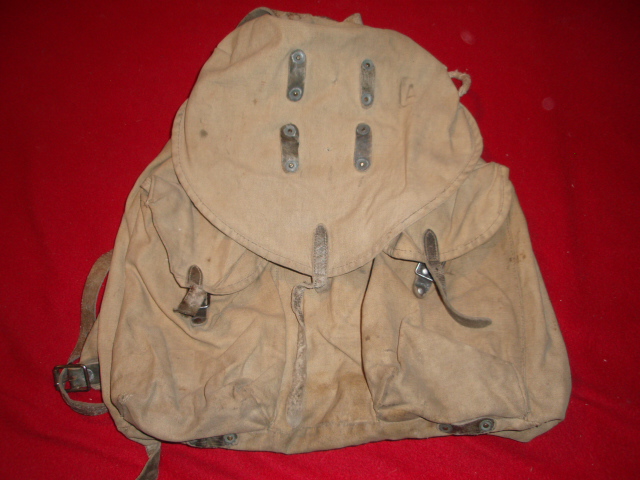
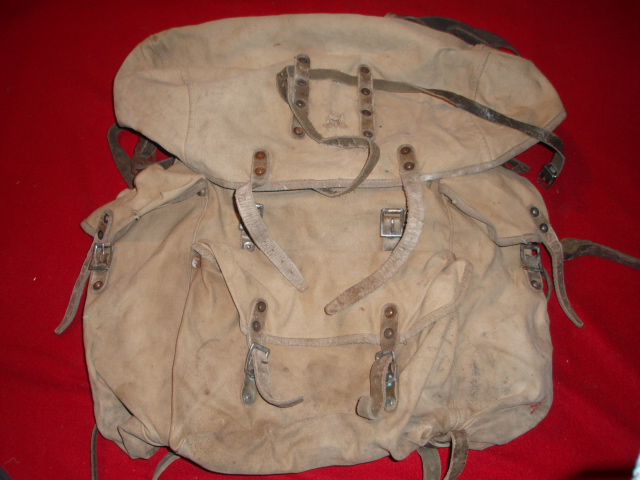
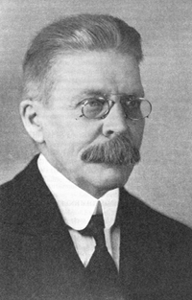
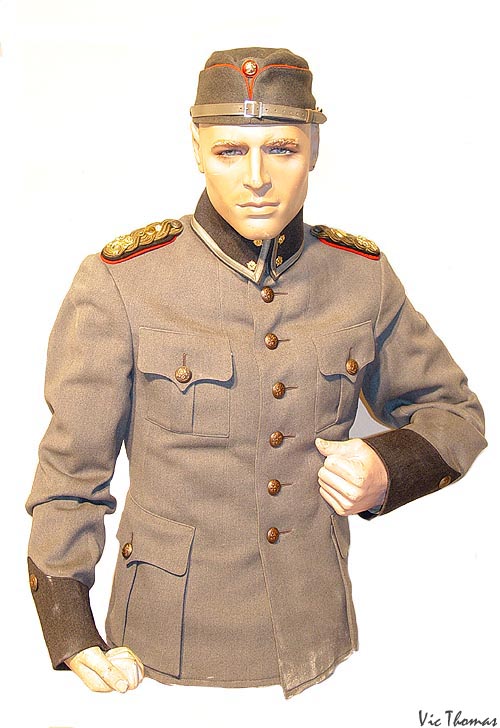
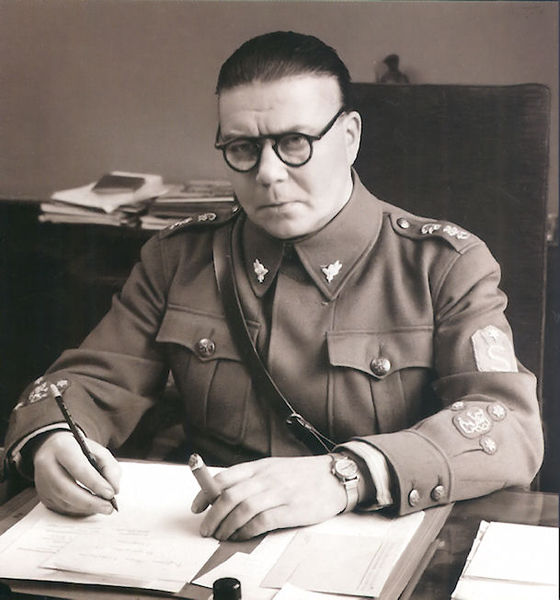
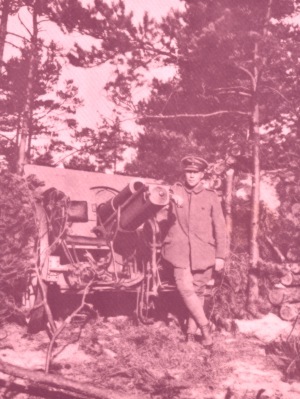
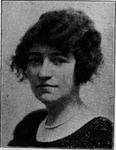
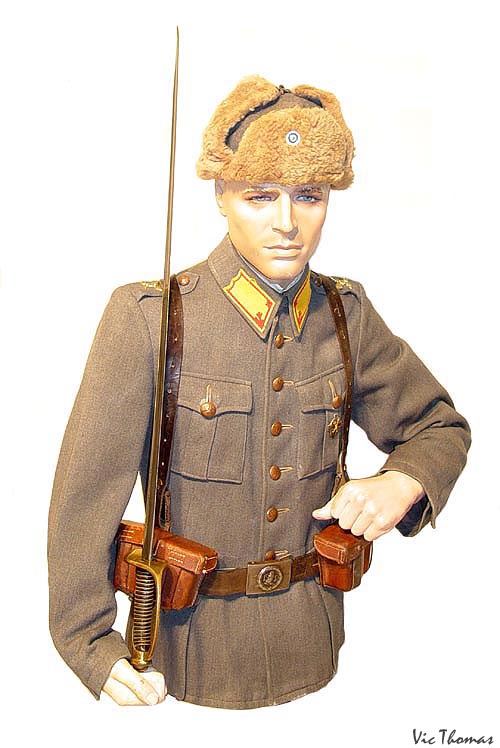
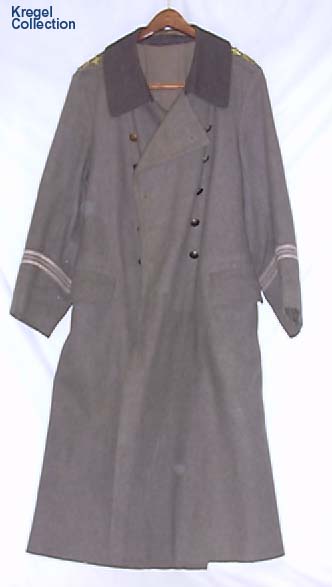
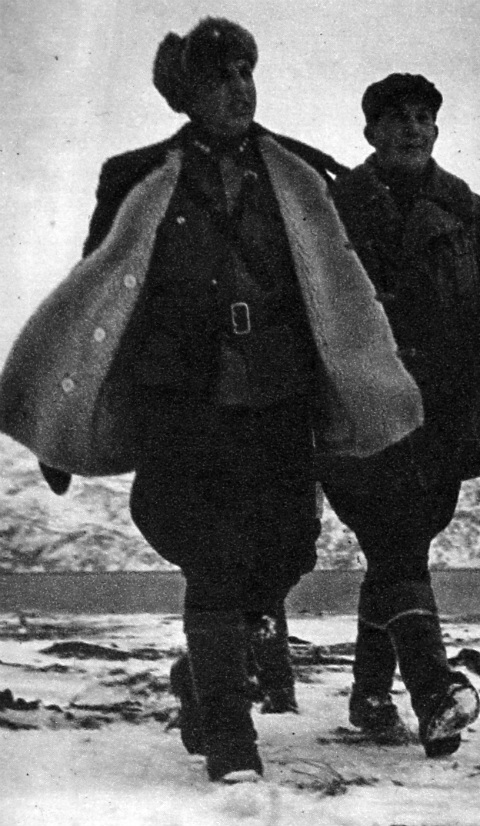

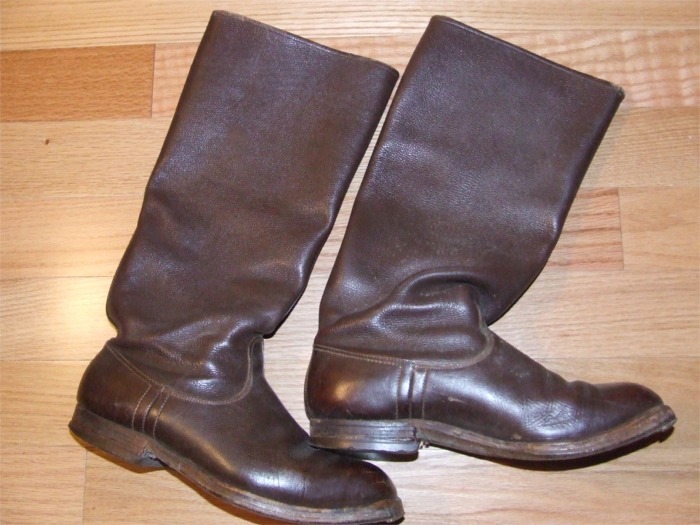
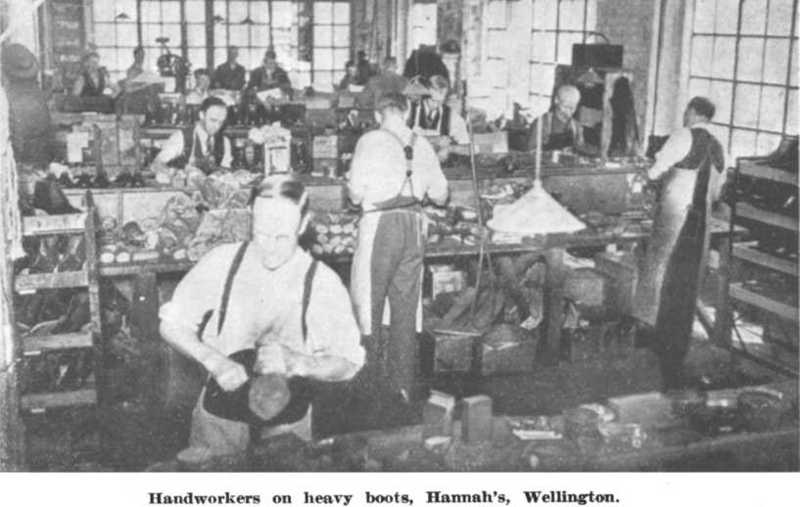
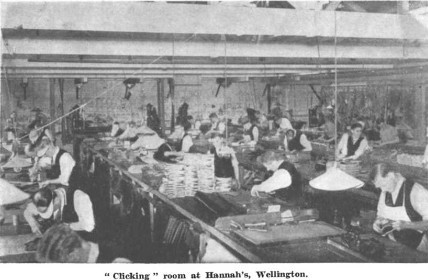
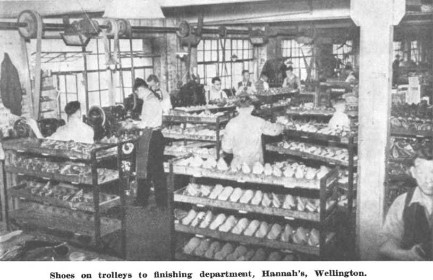
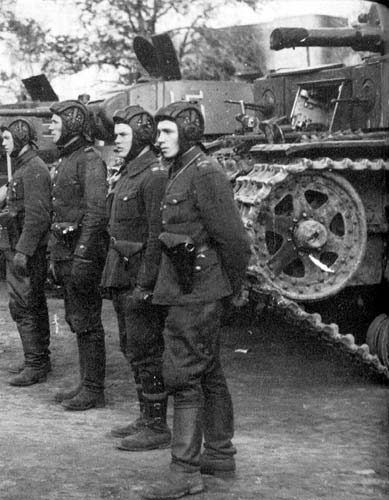
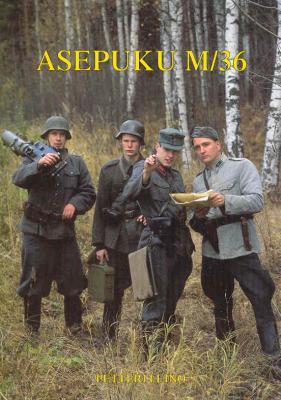
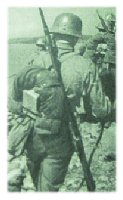
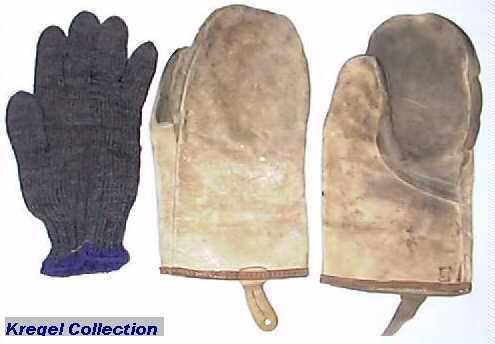
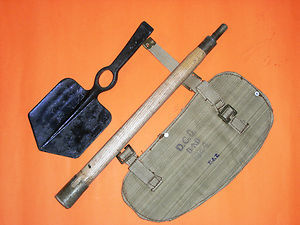
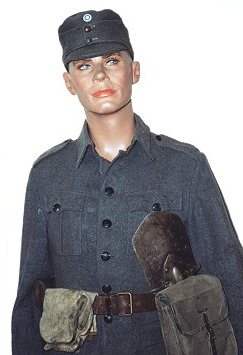
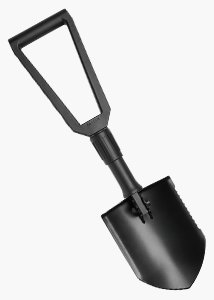
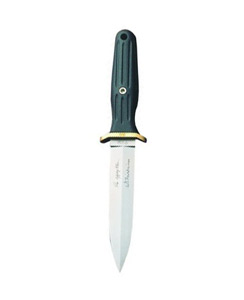
Pingback: Had enough of that bloody bird - Page 3 - Gun and Game - Gun Forum